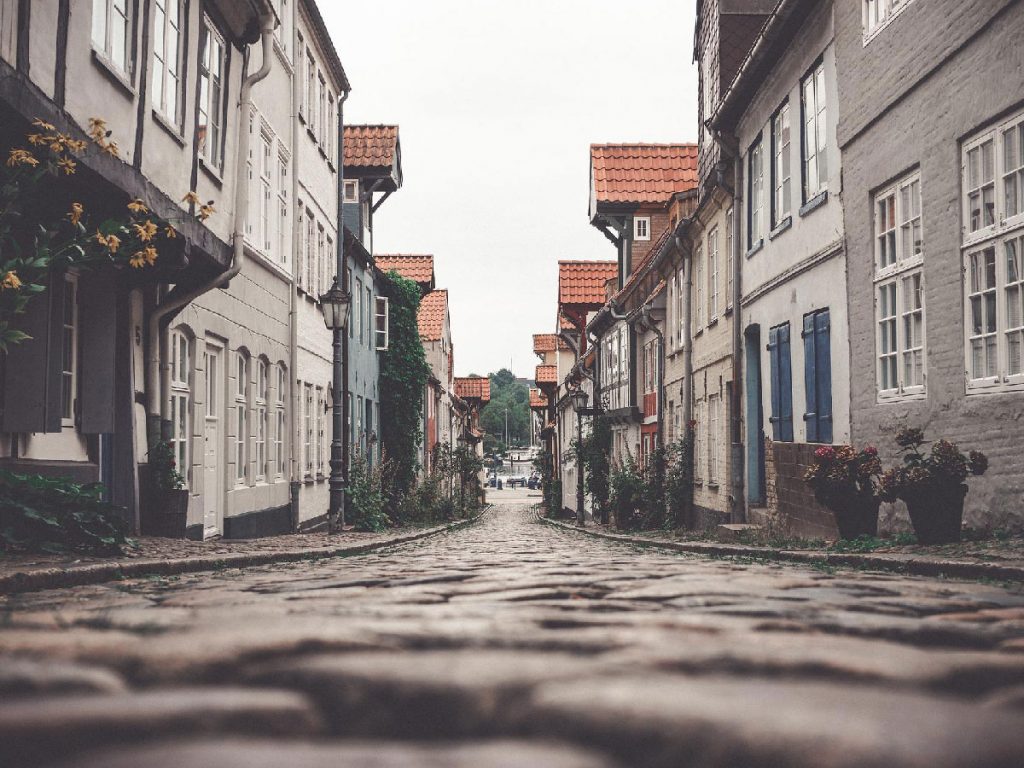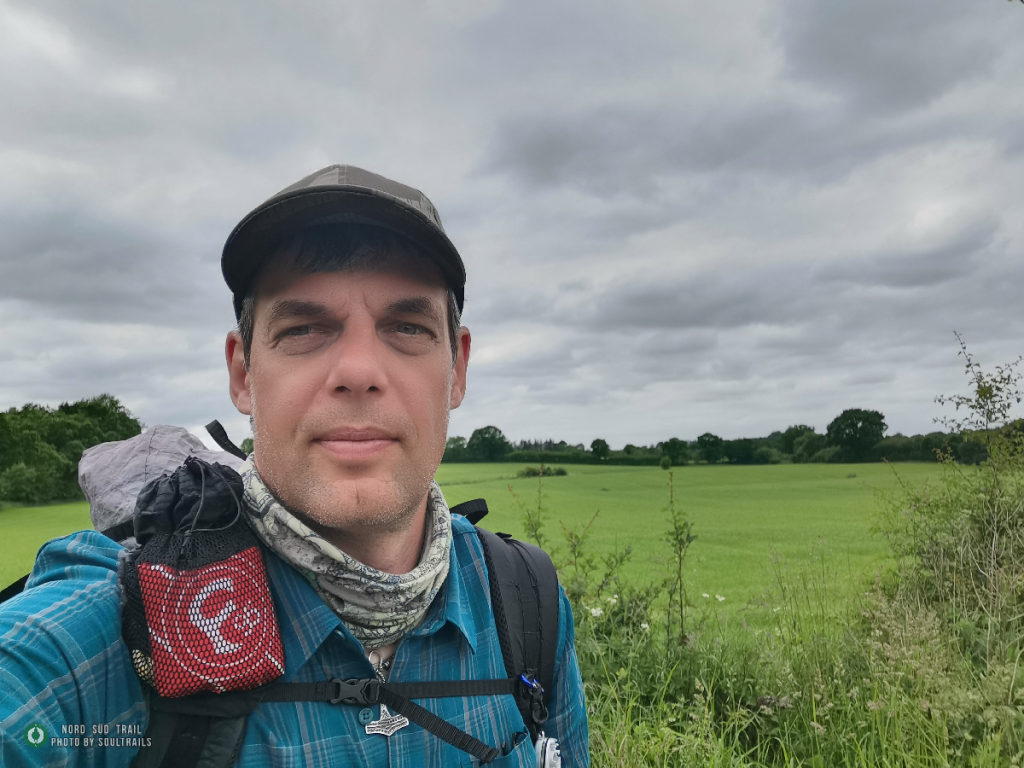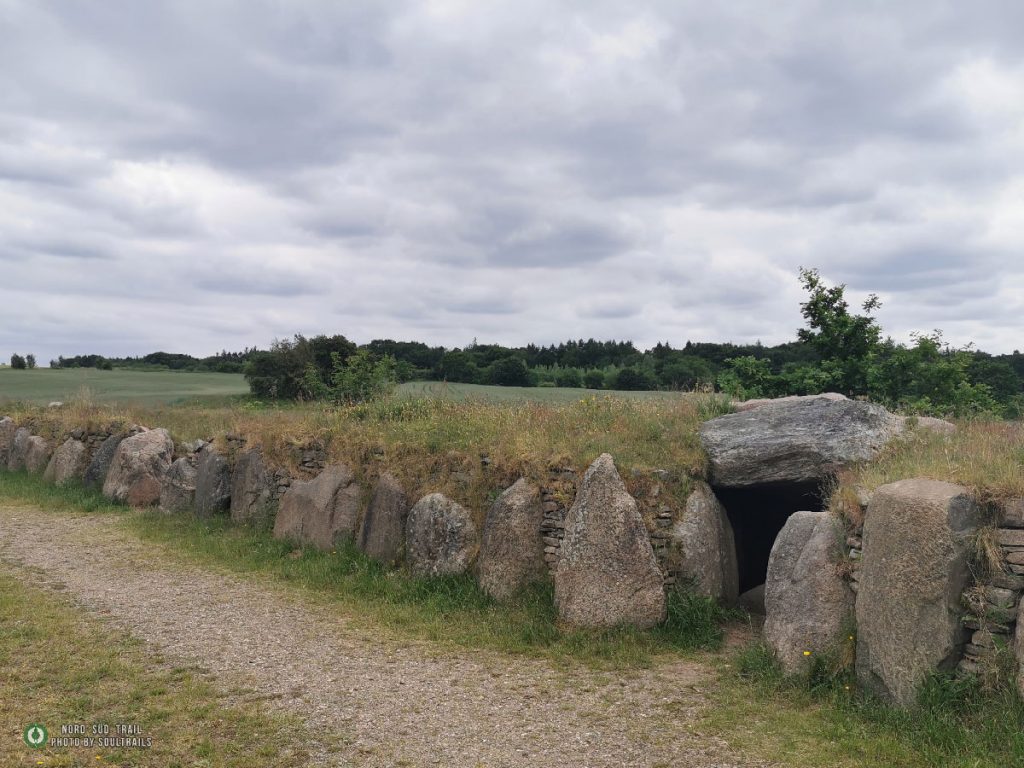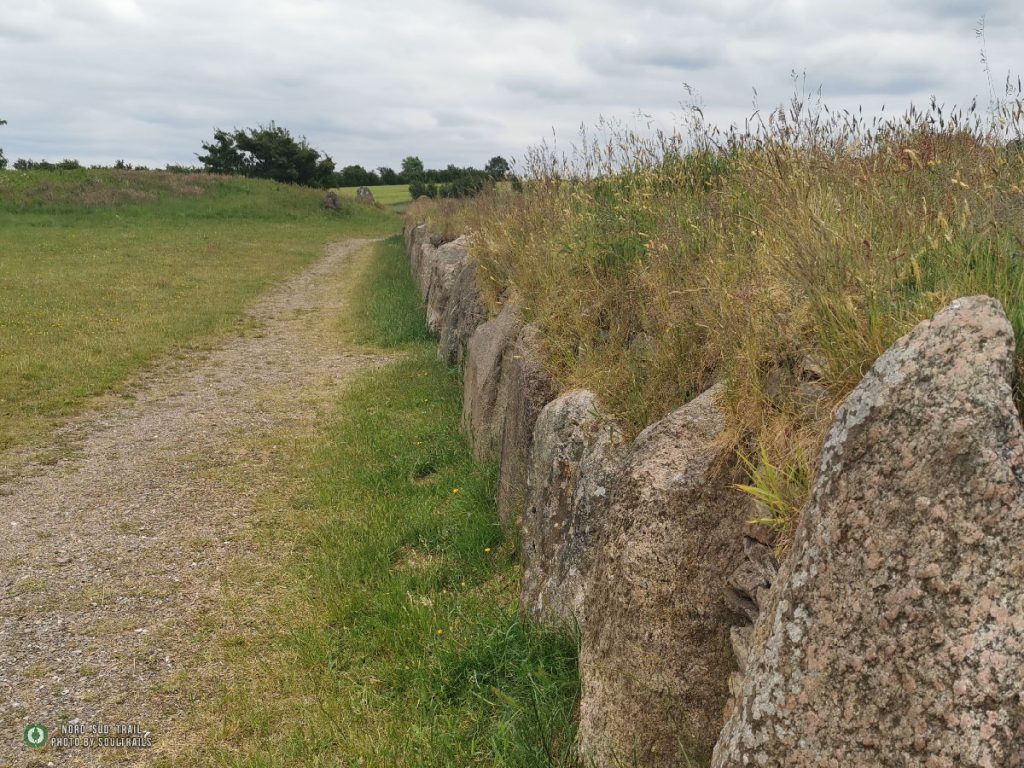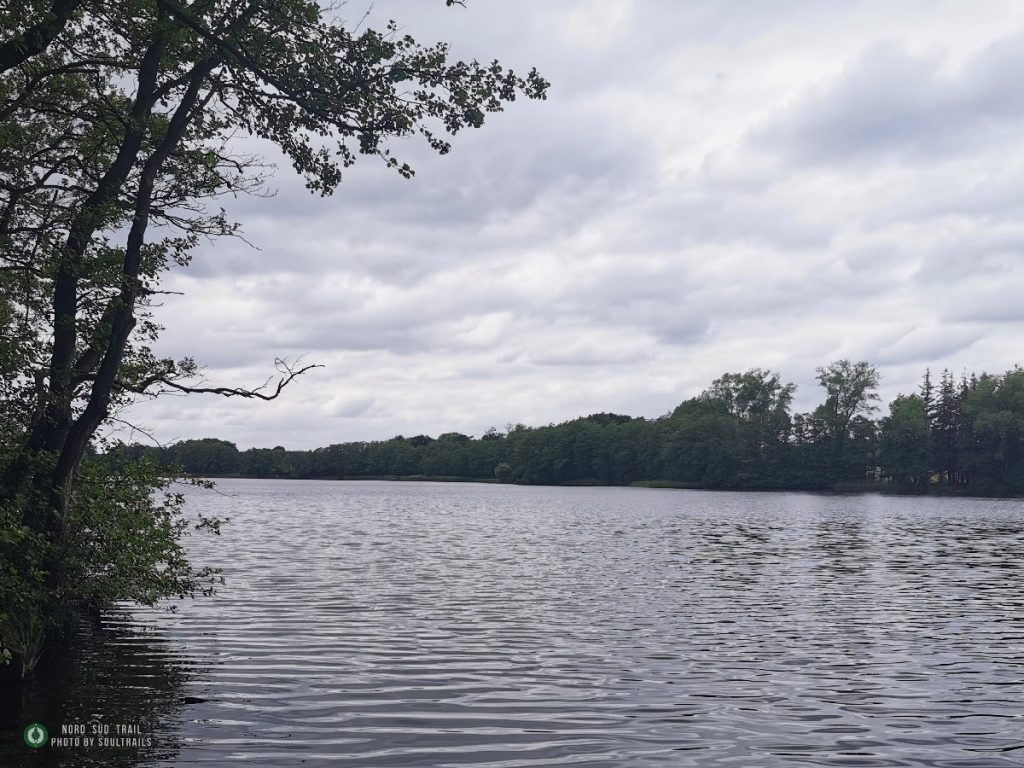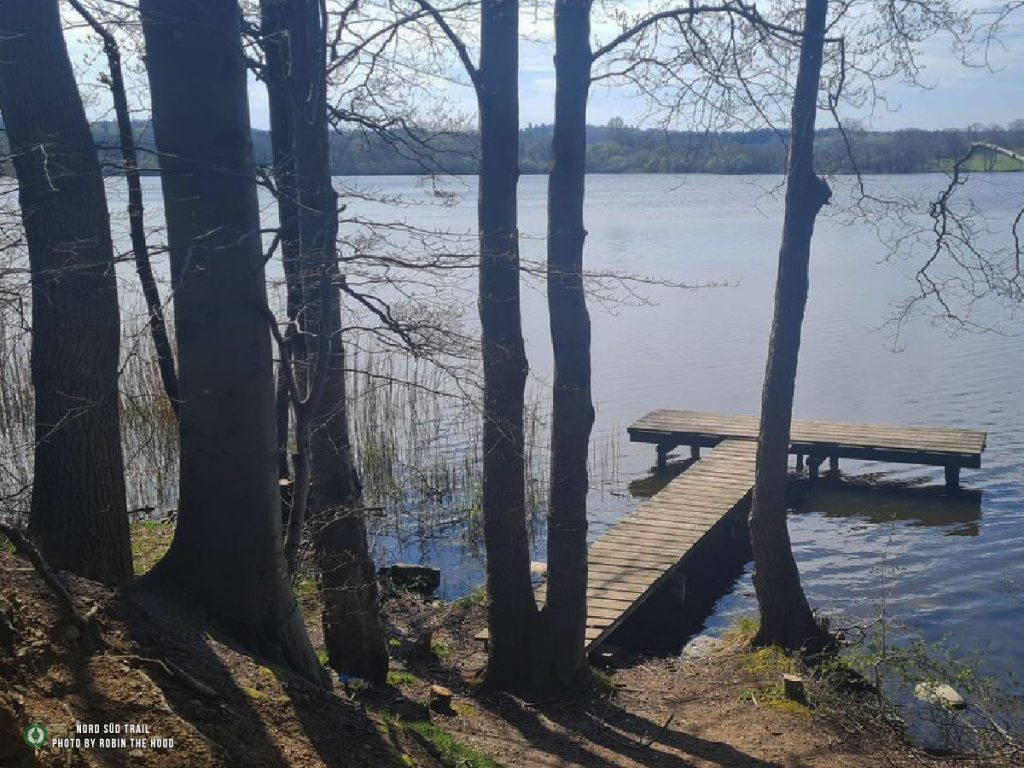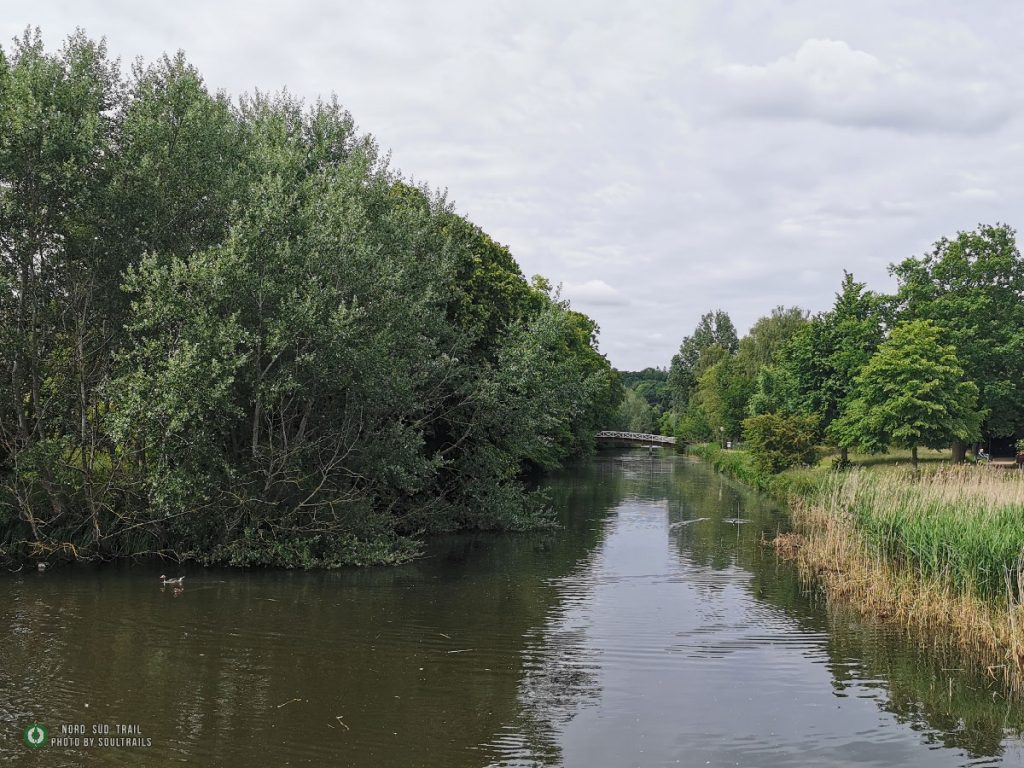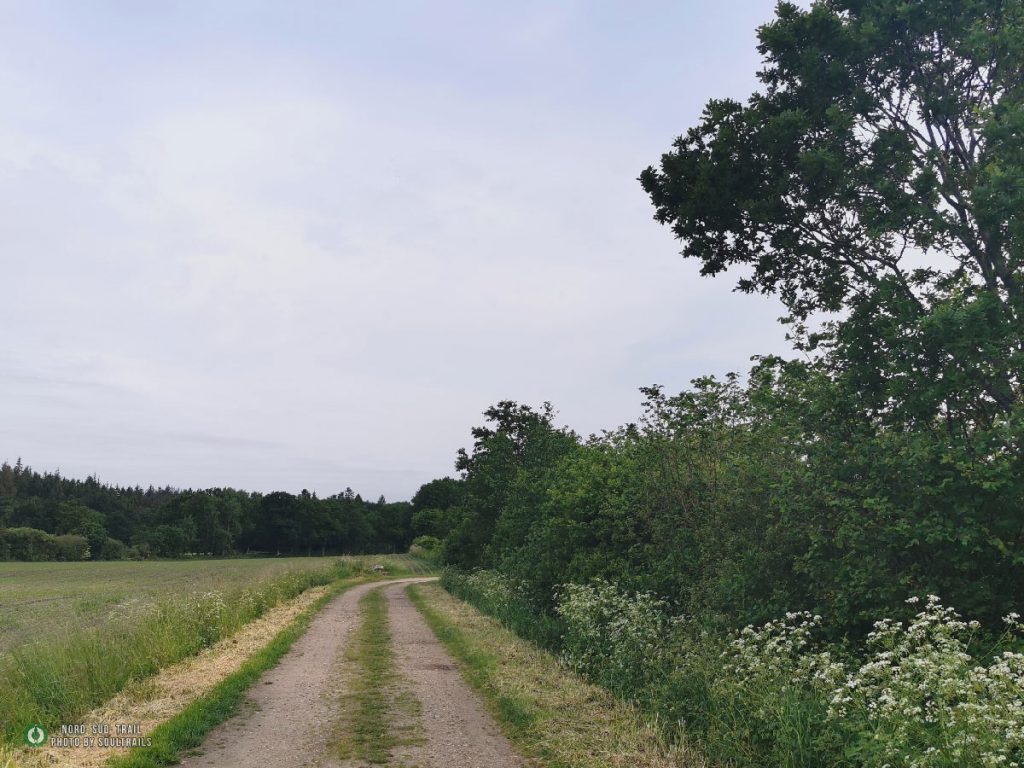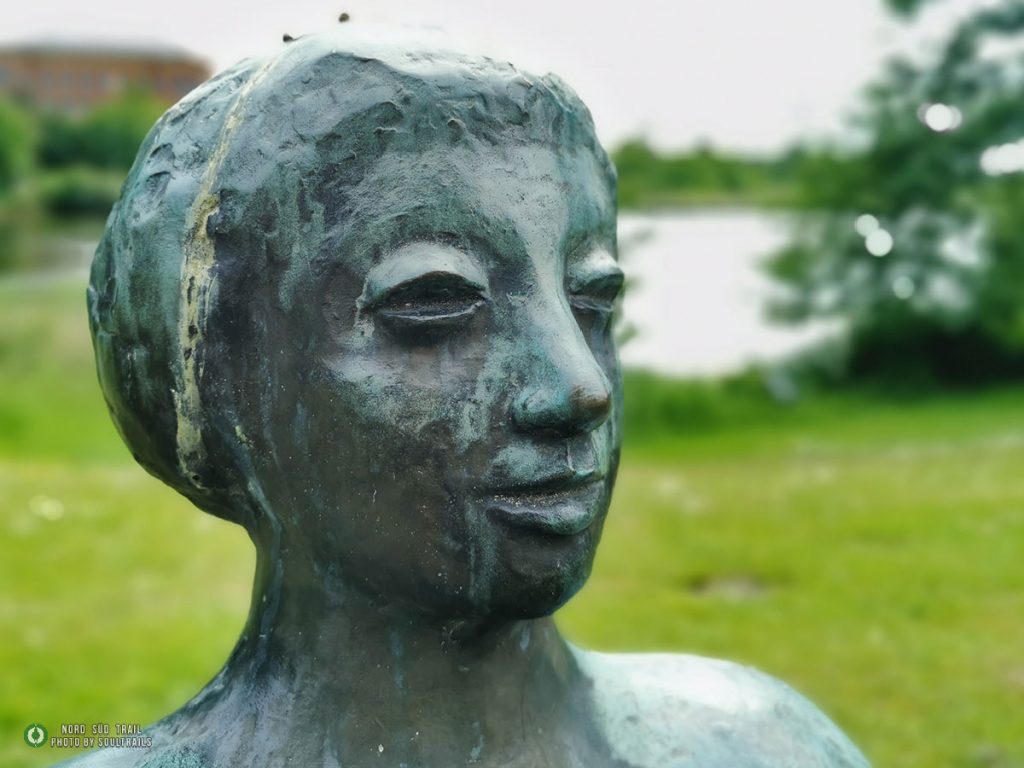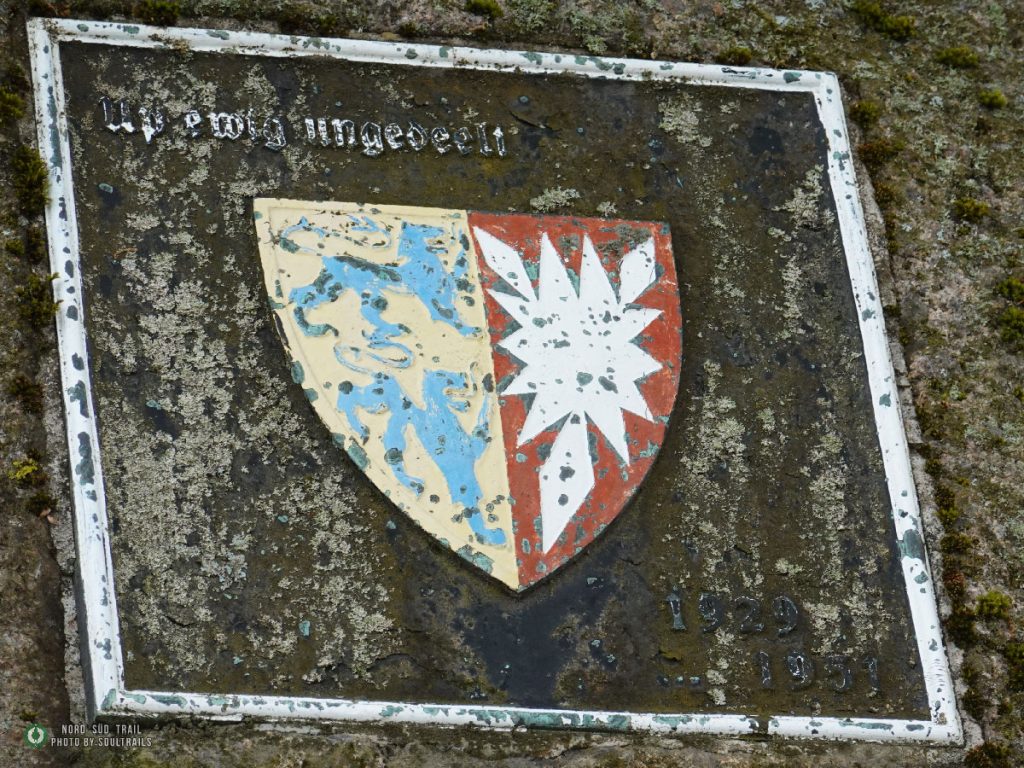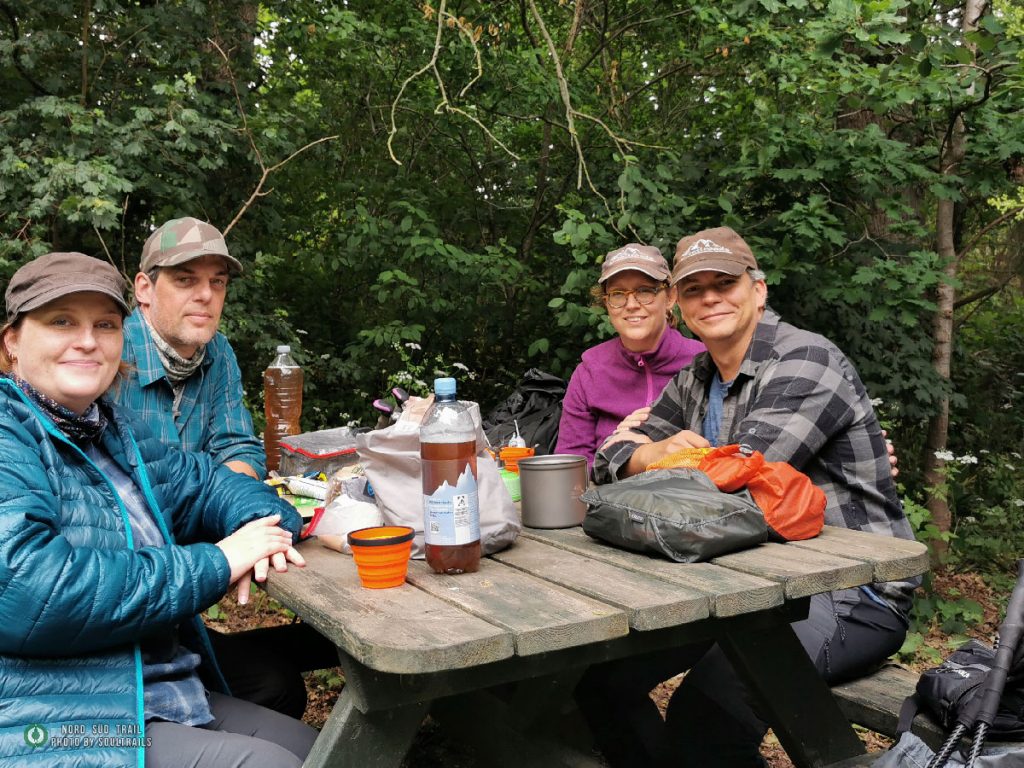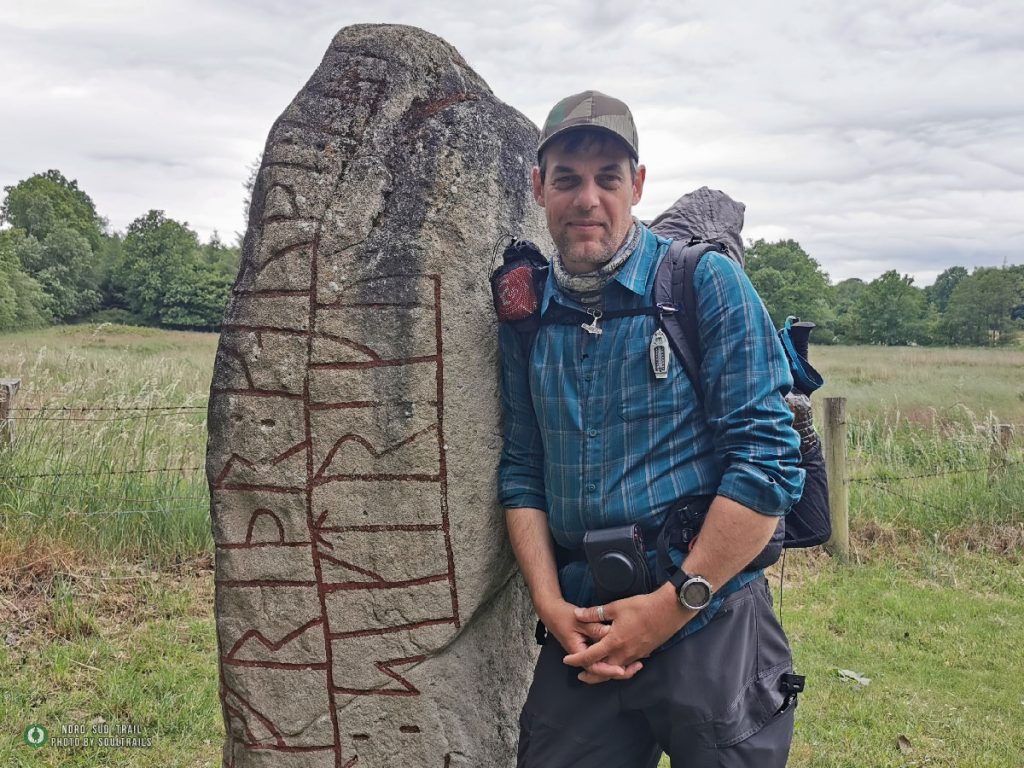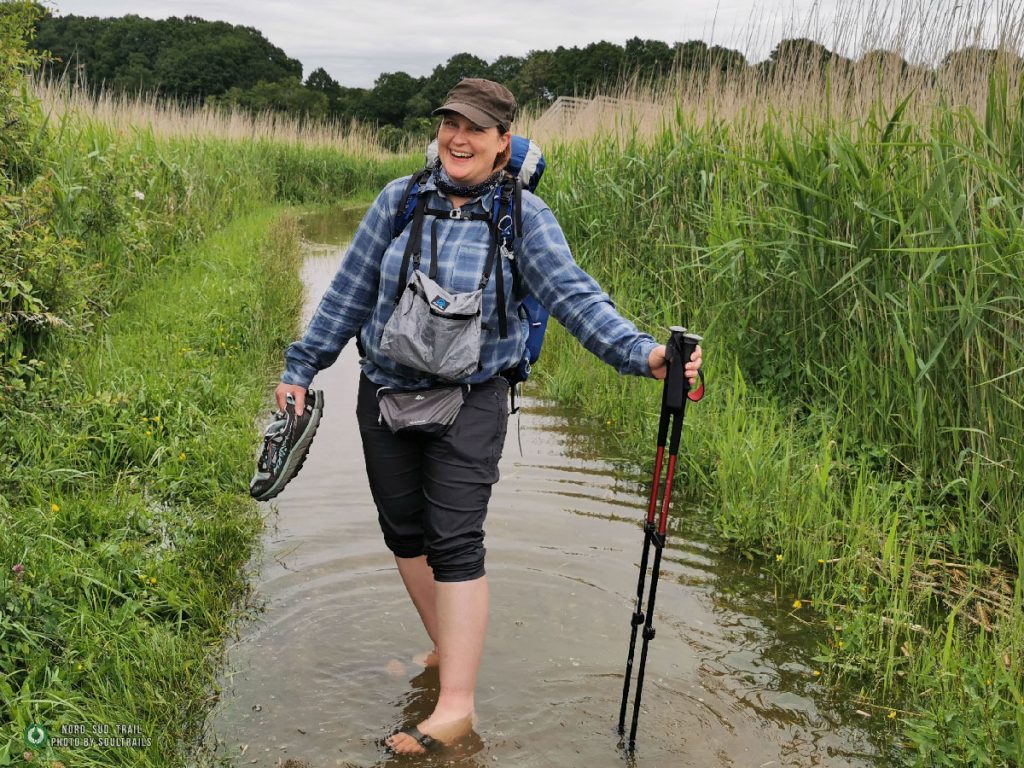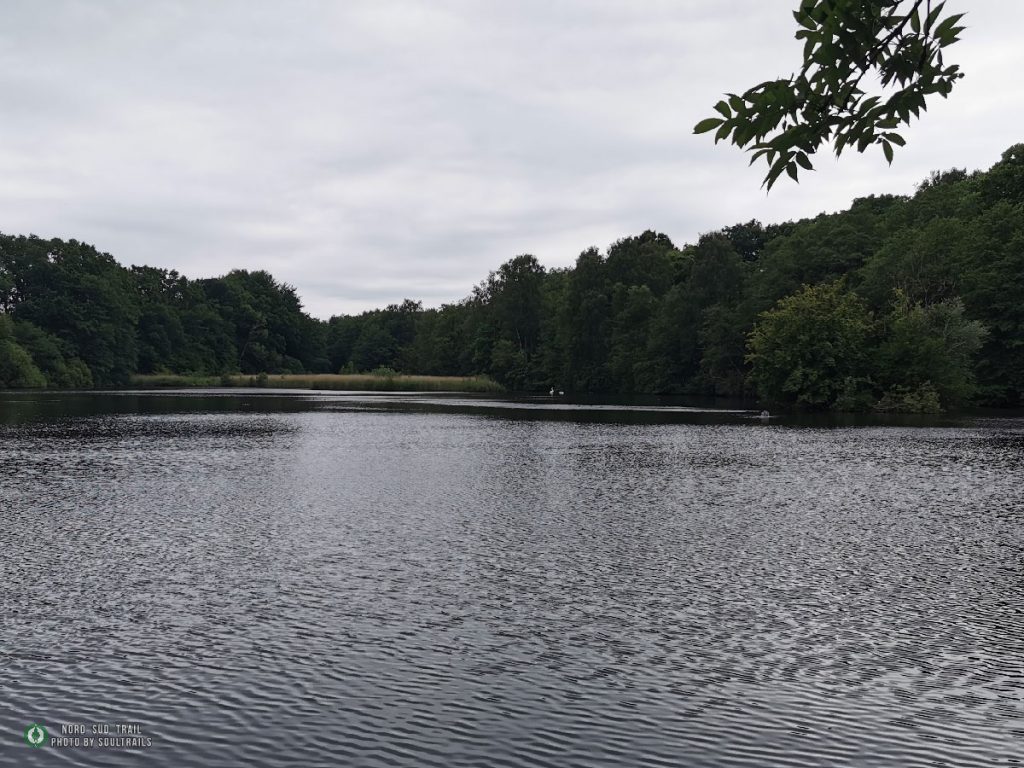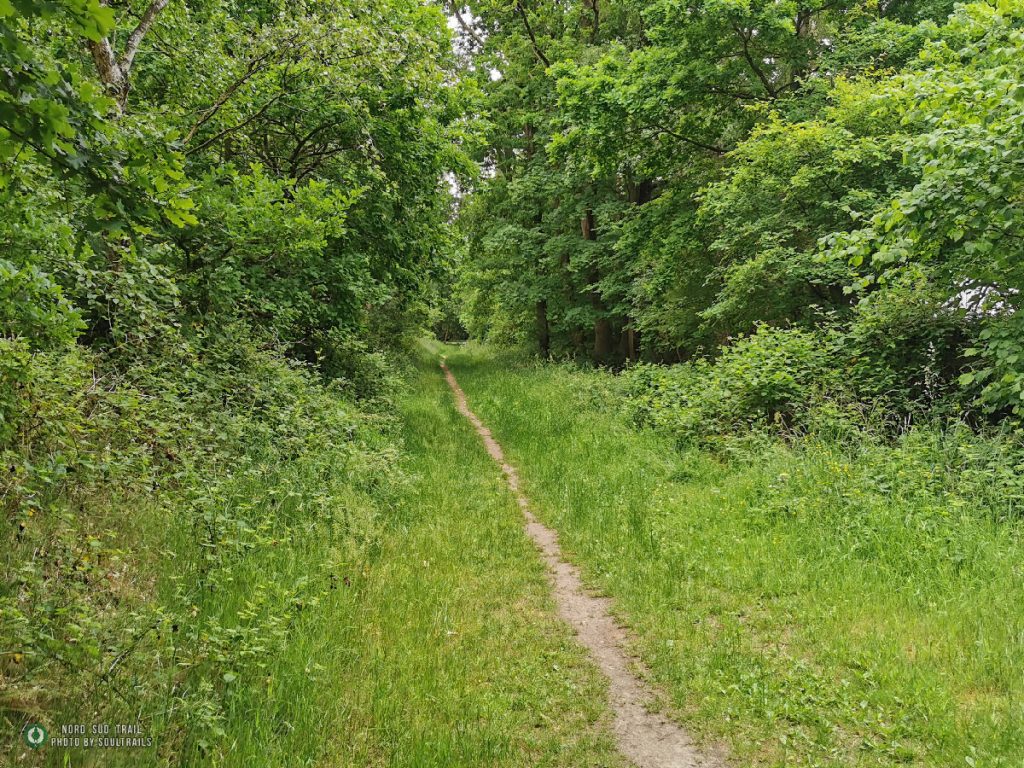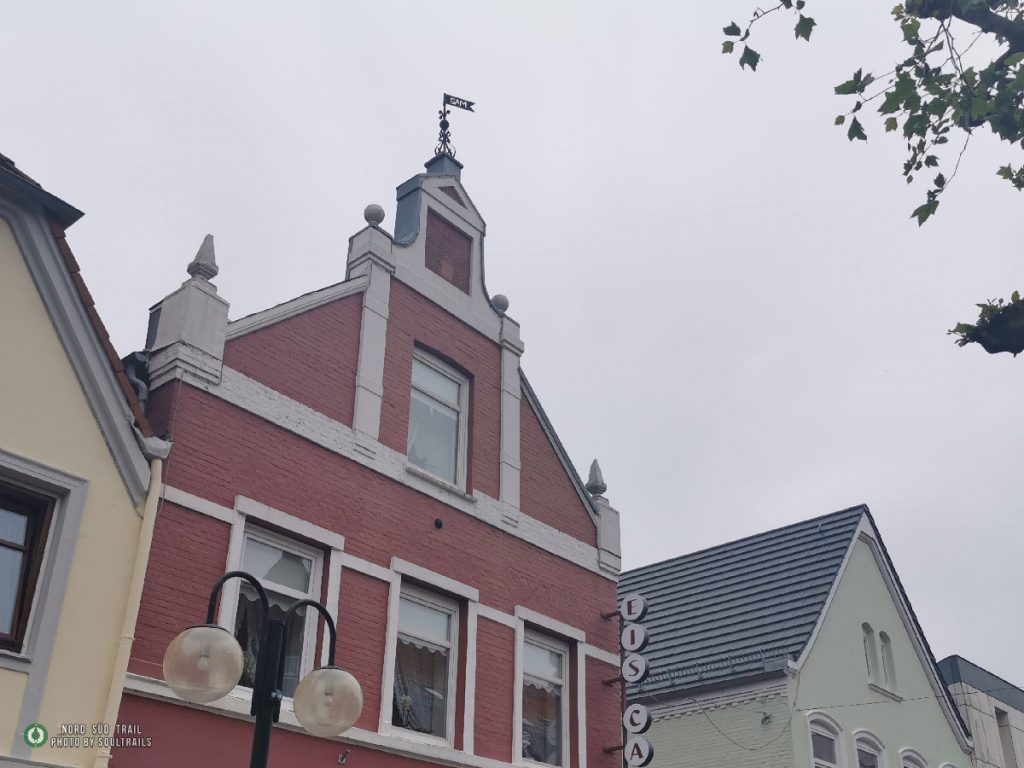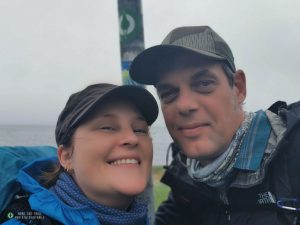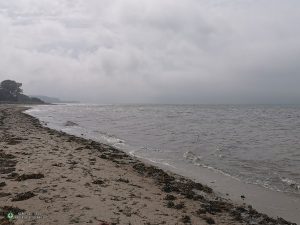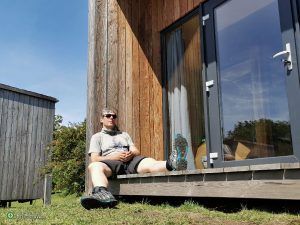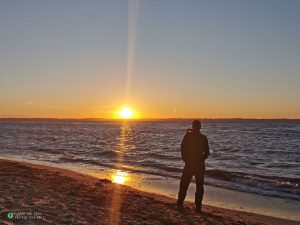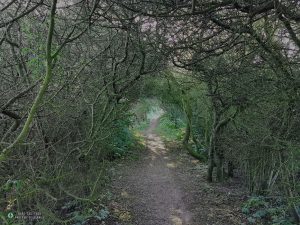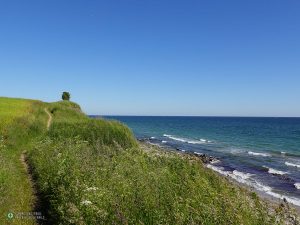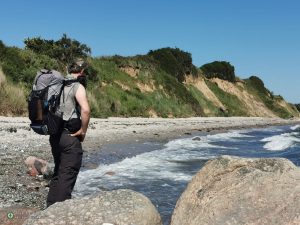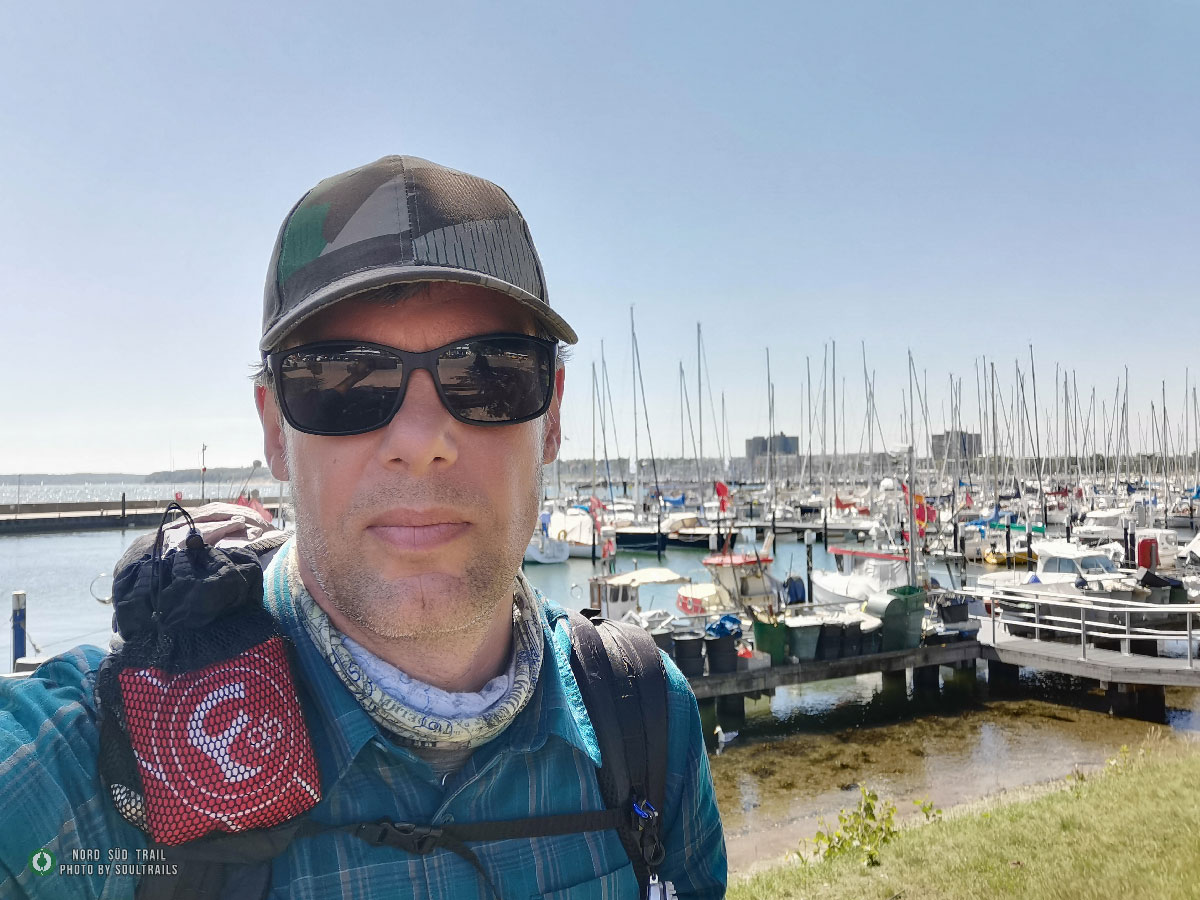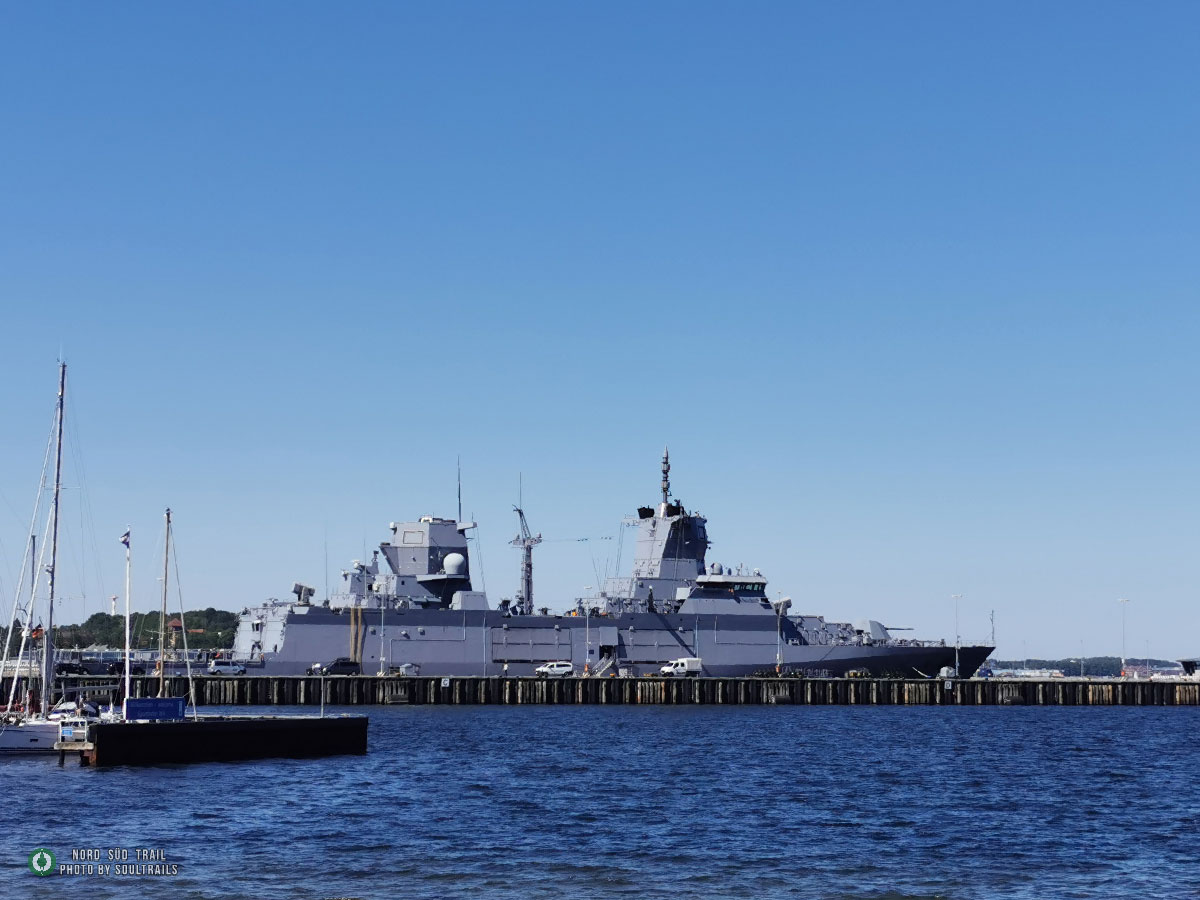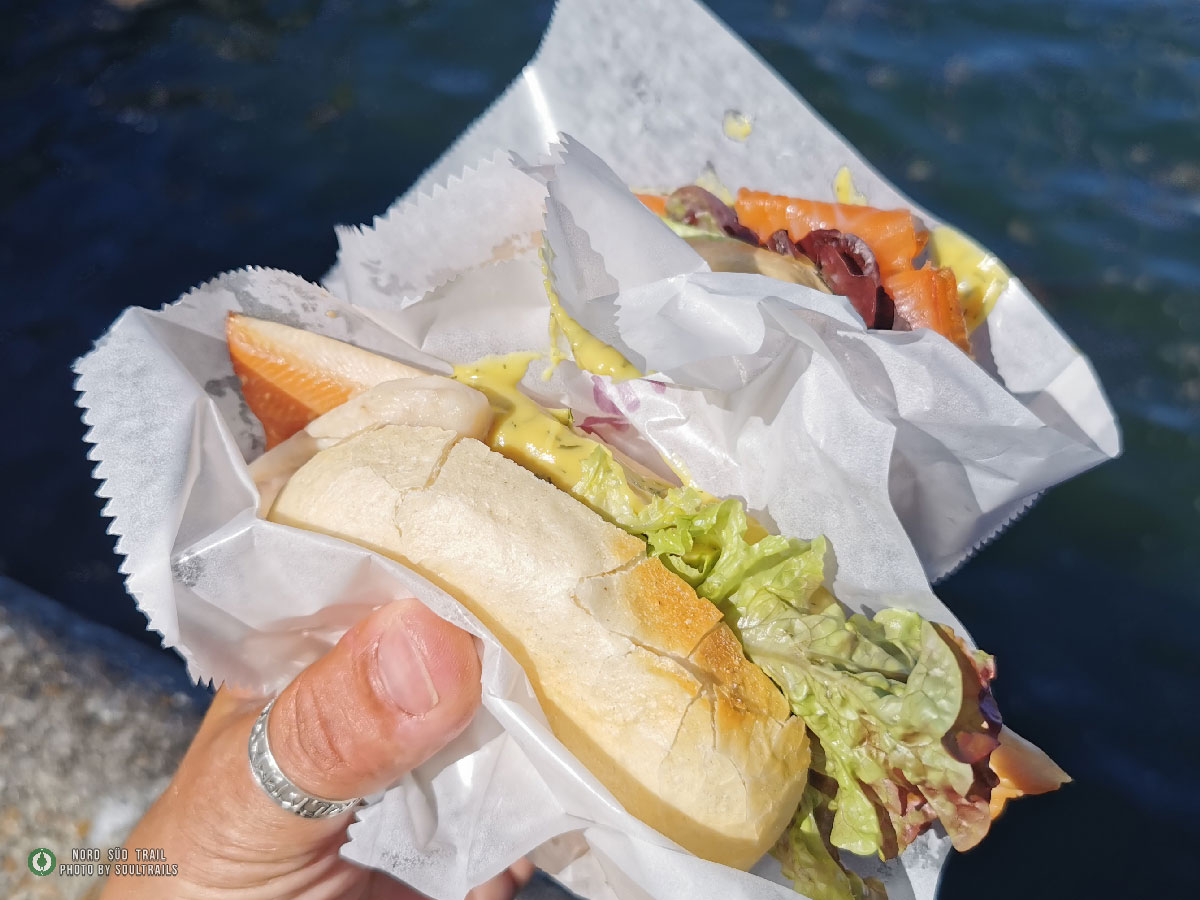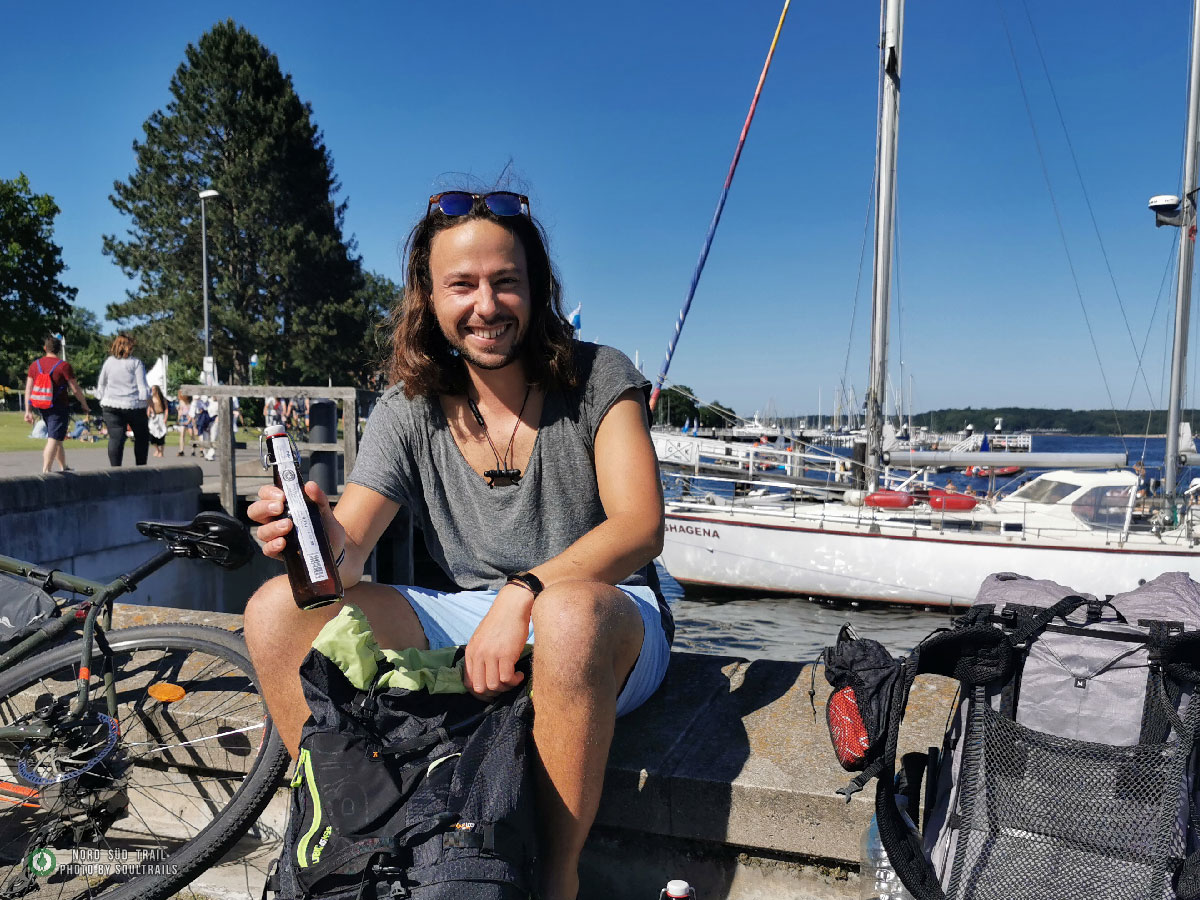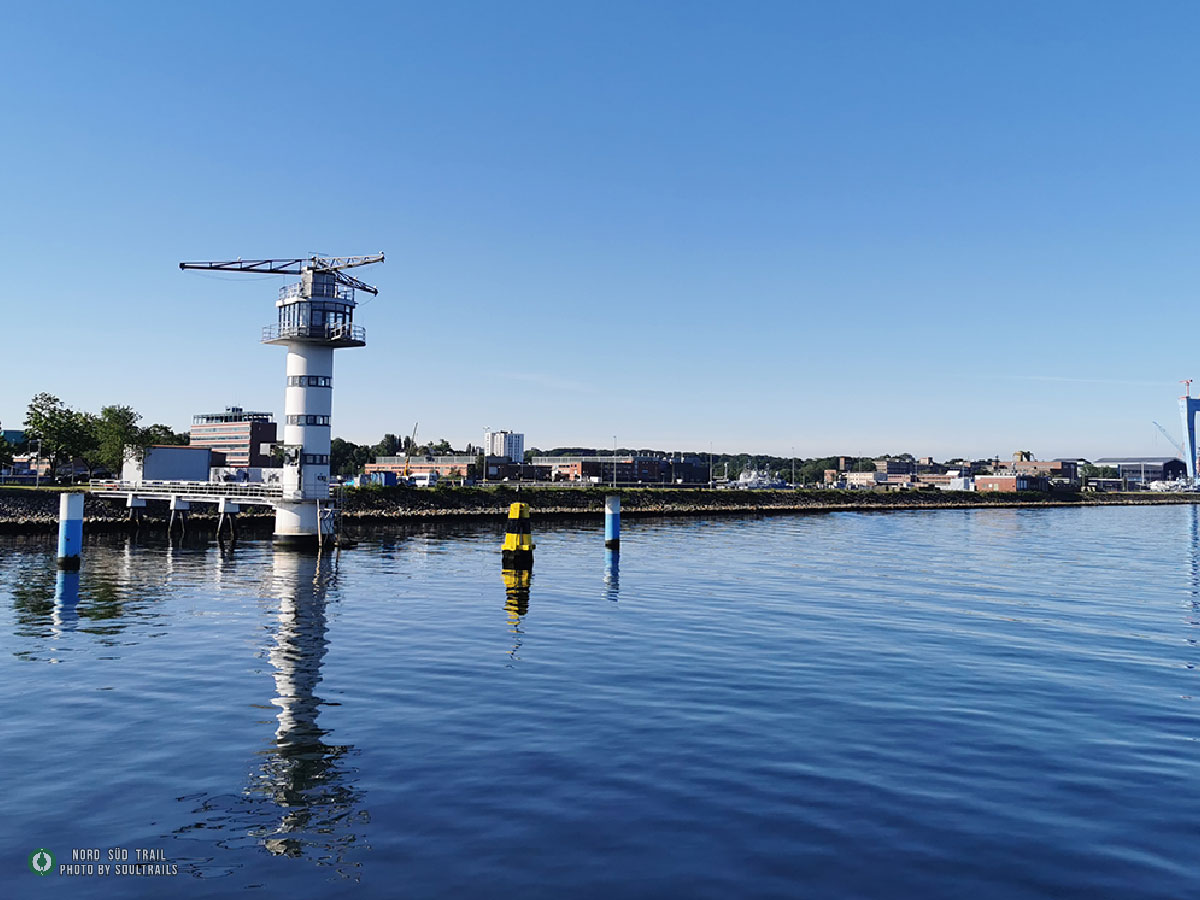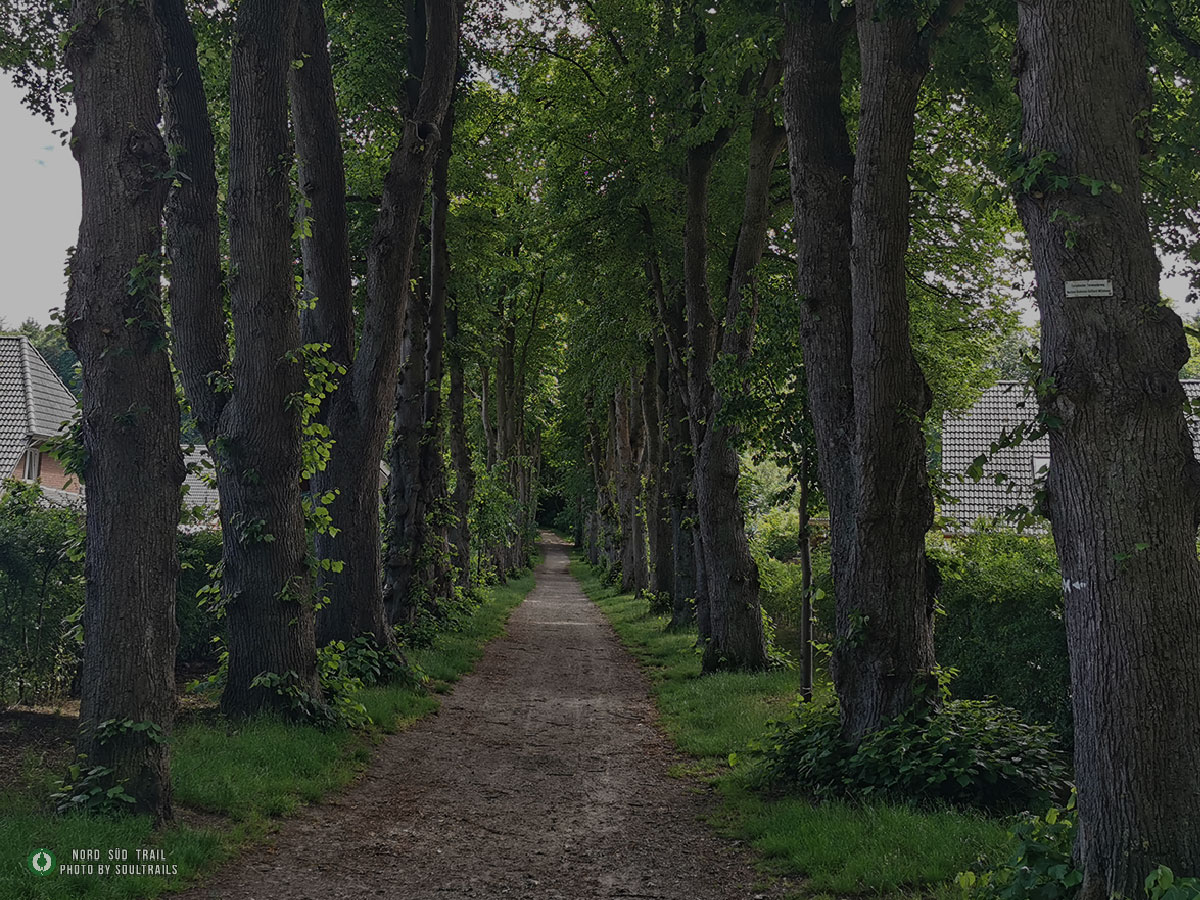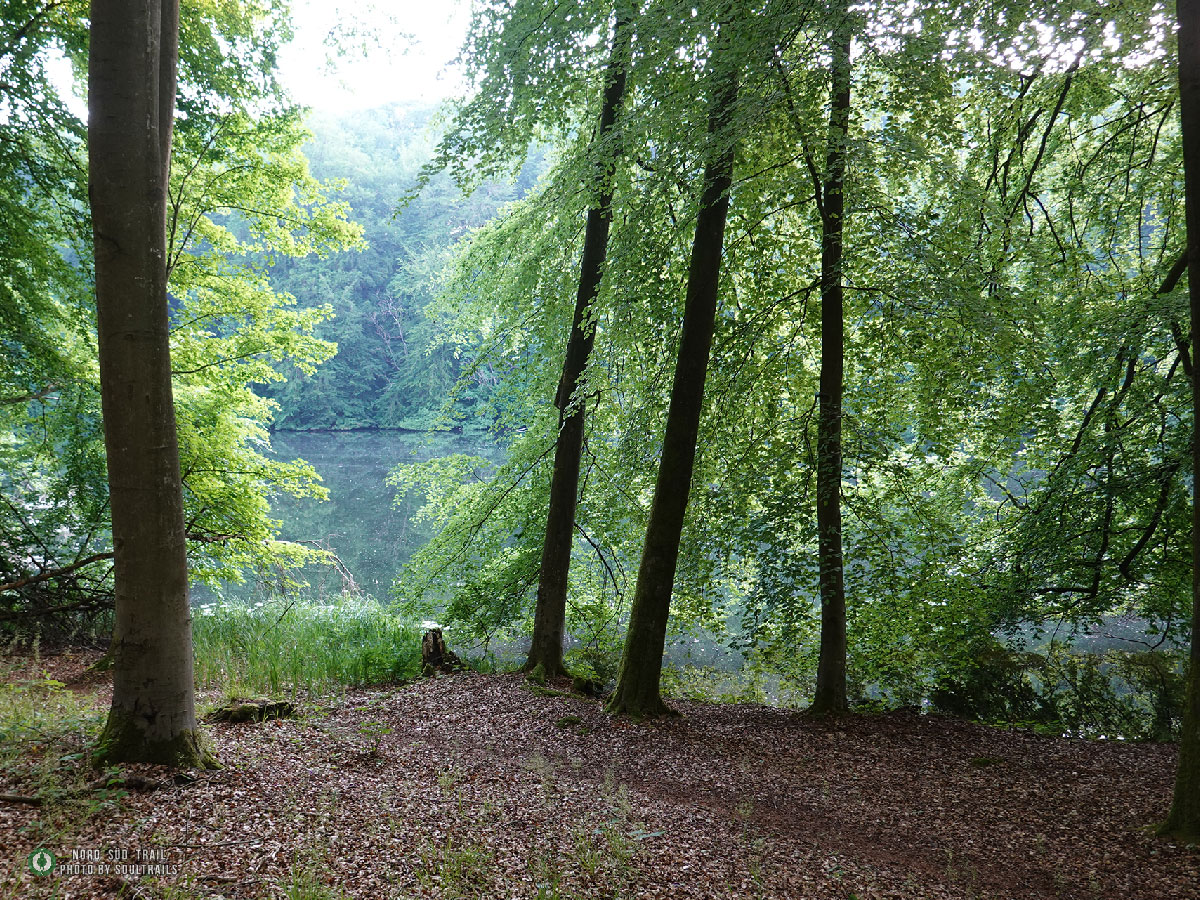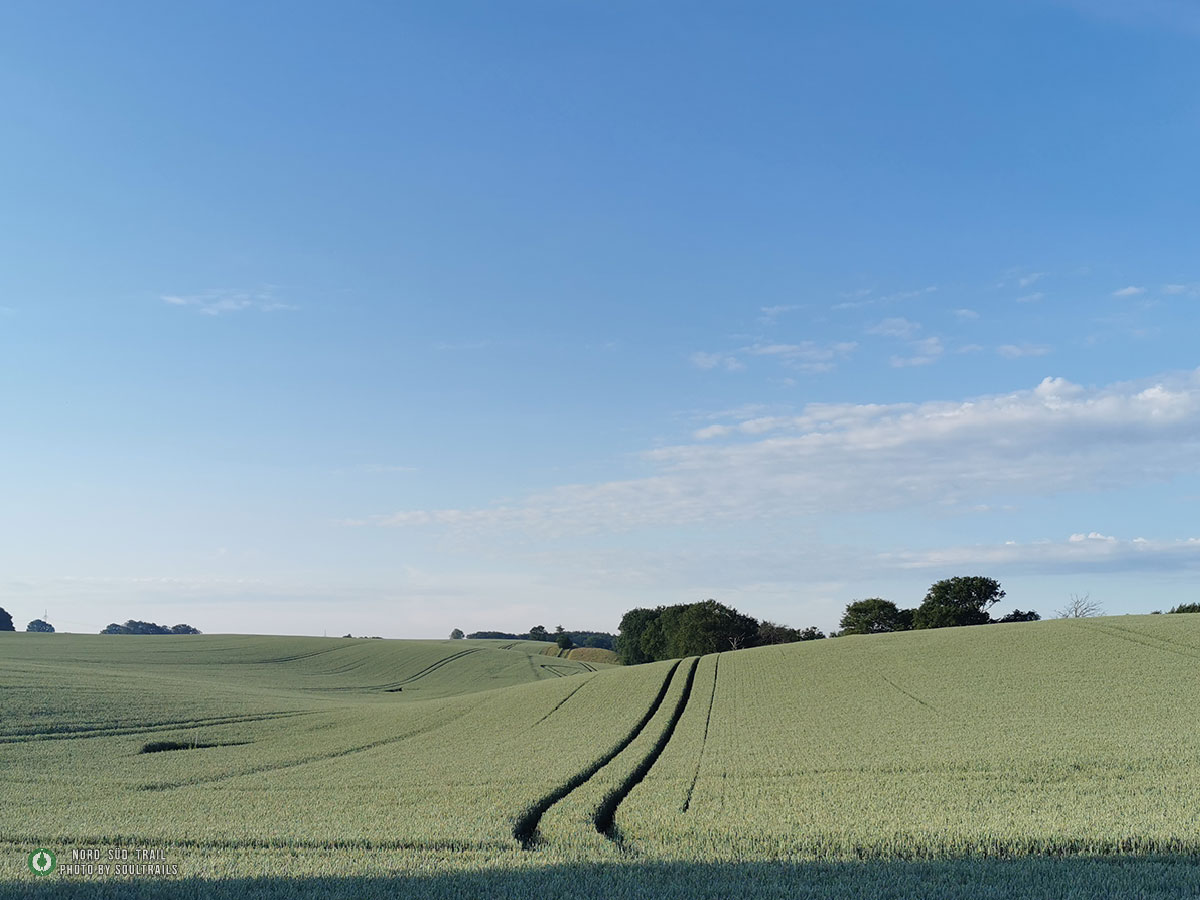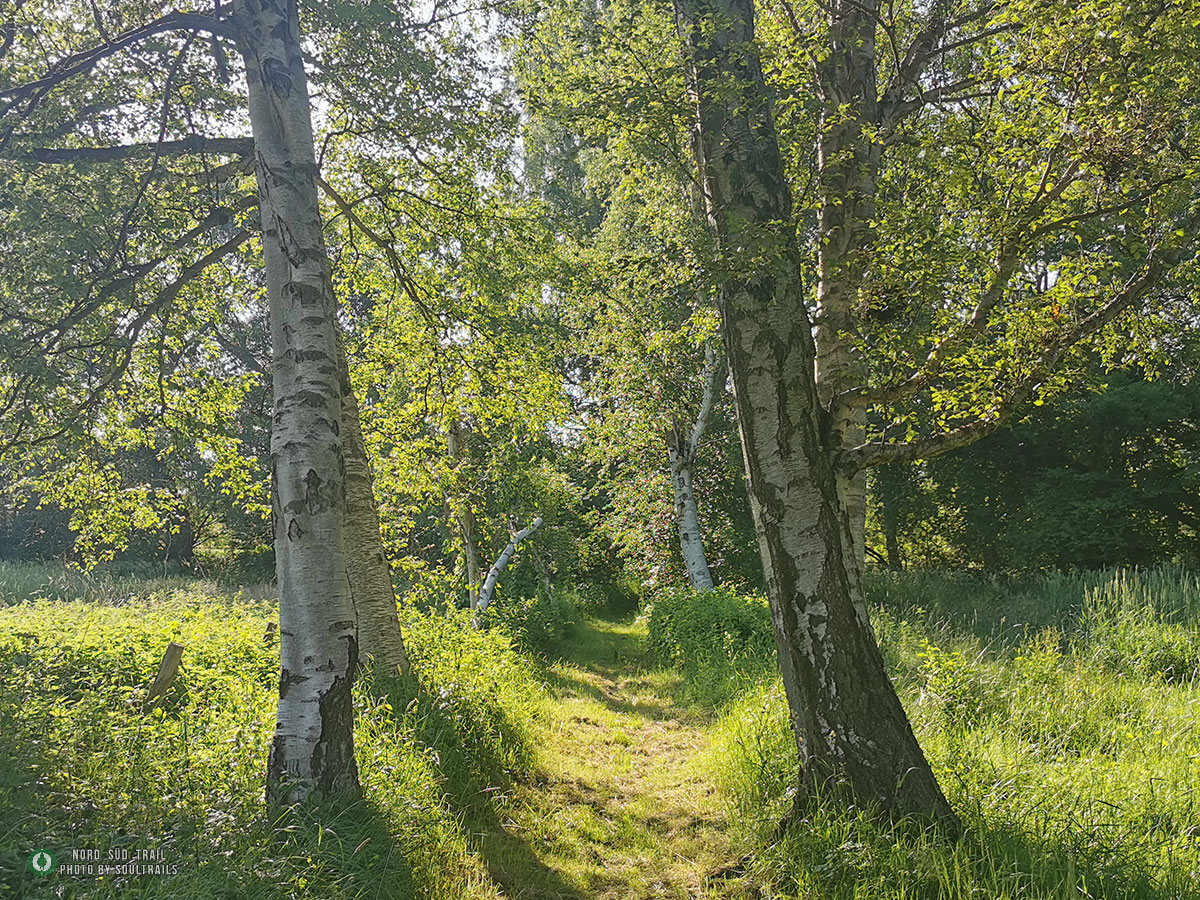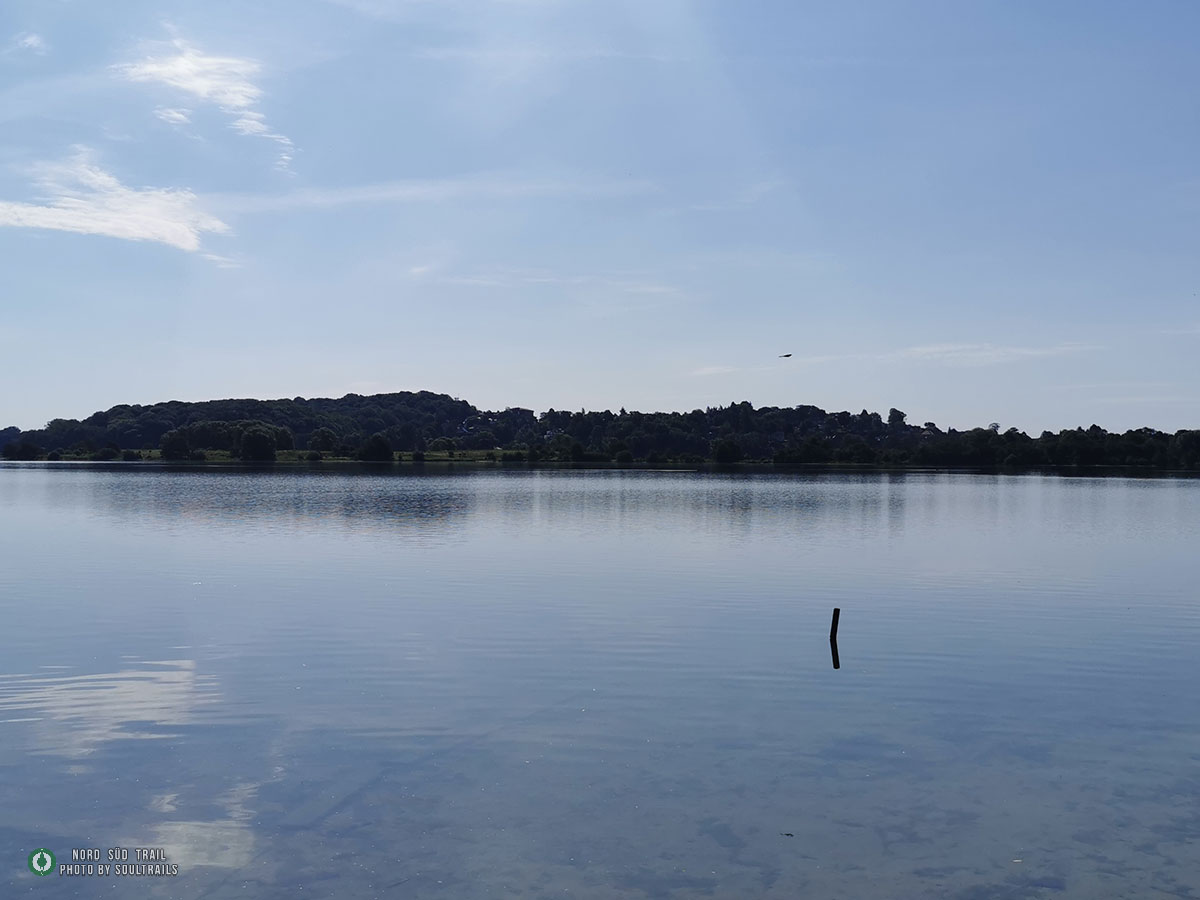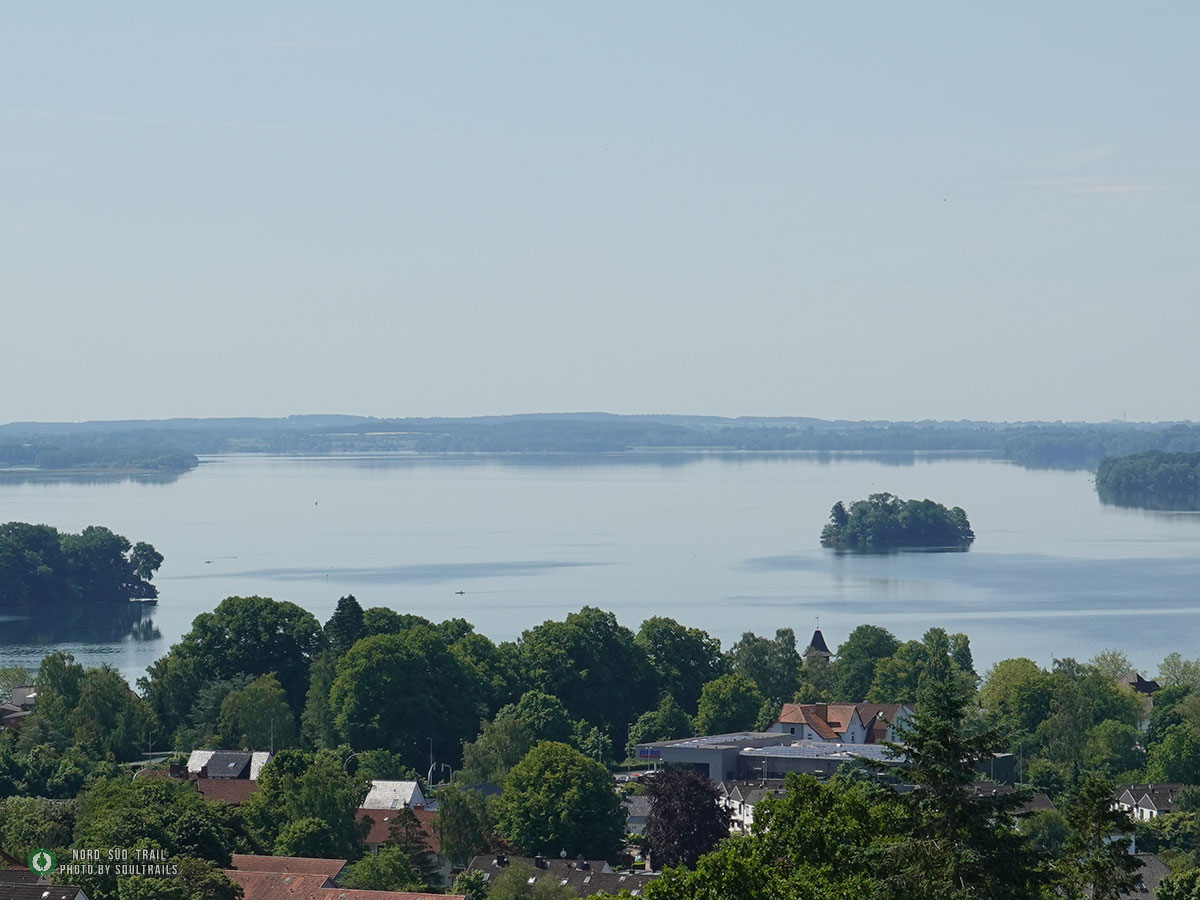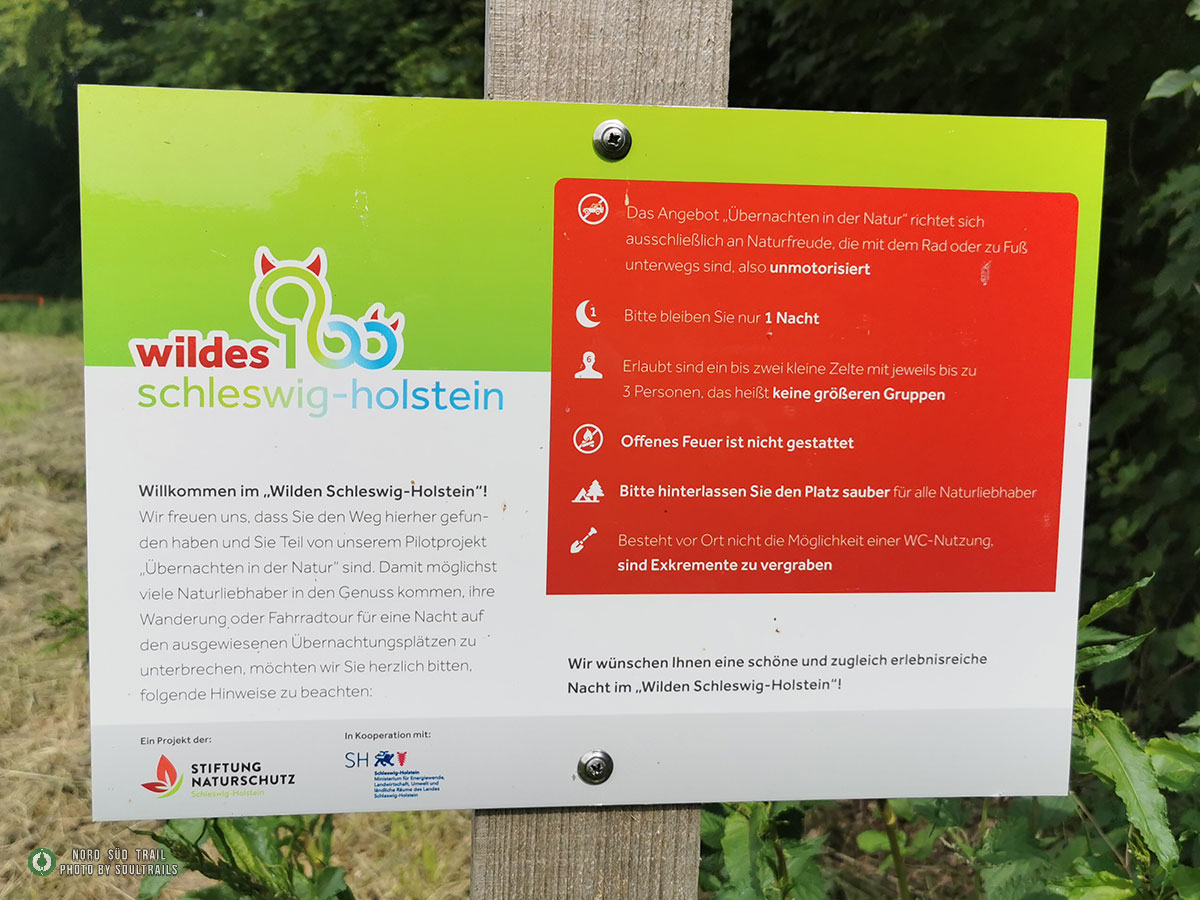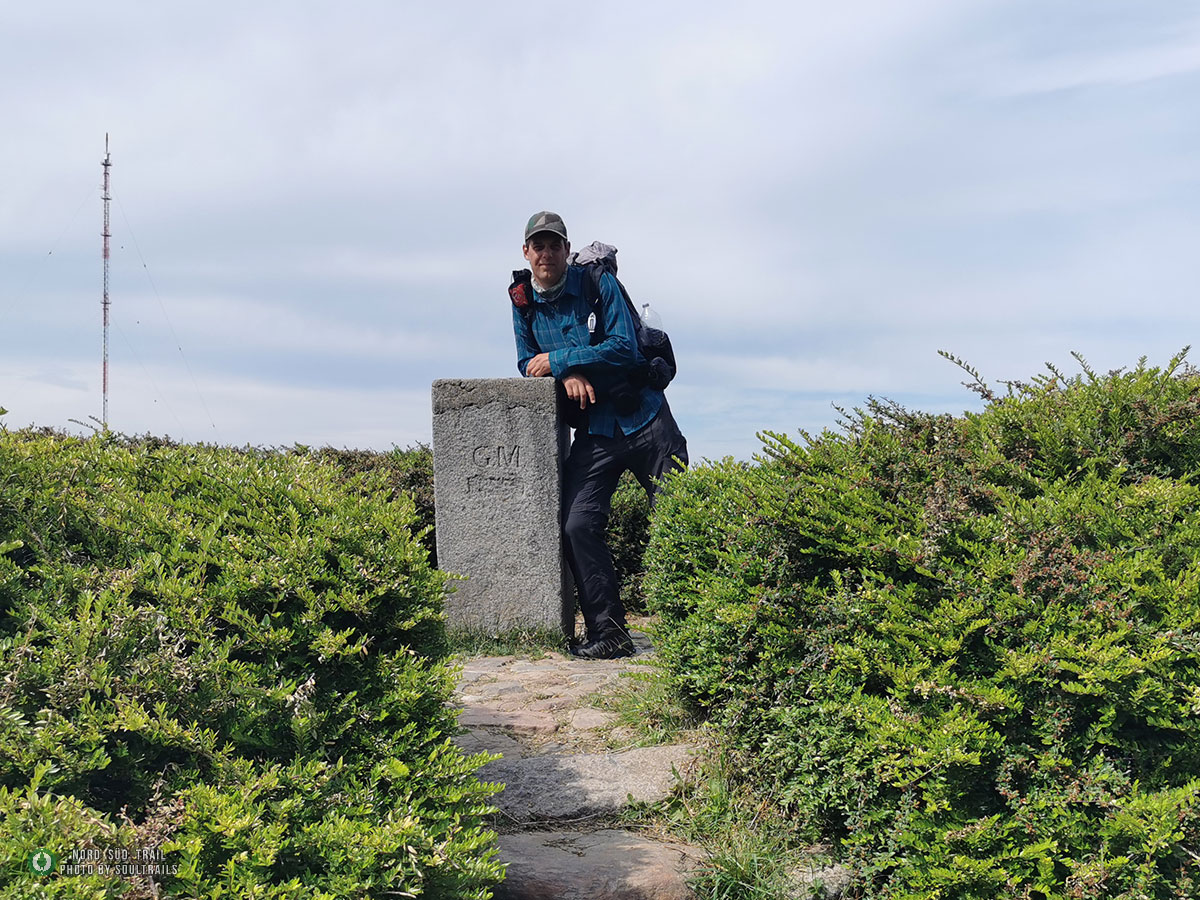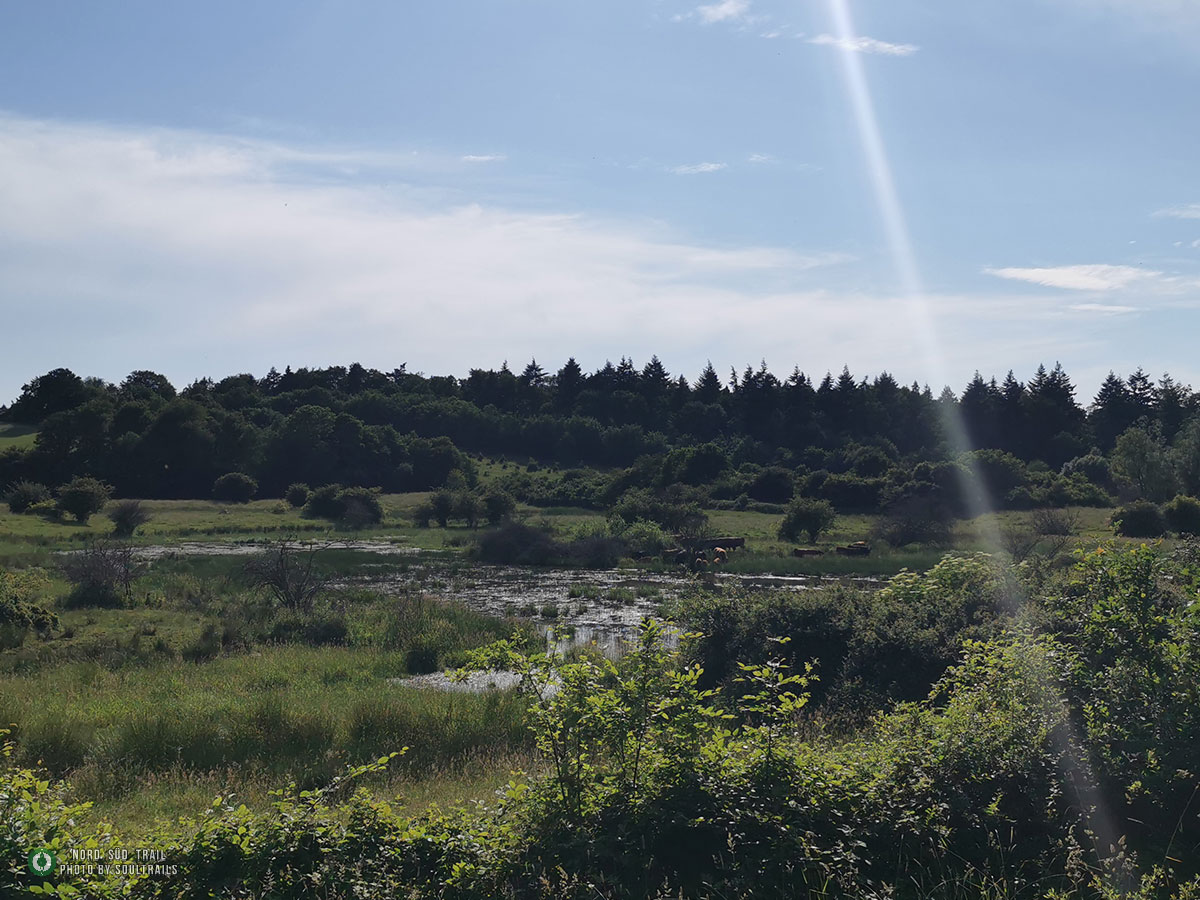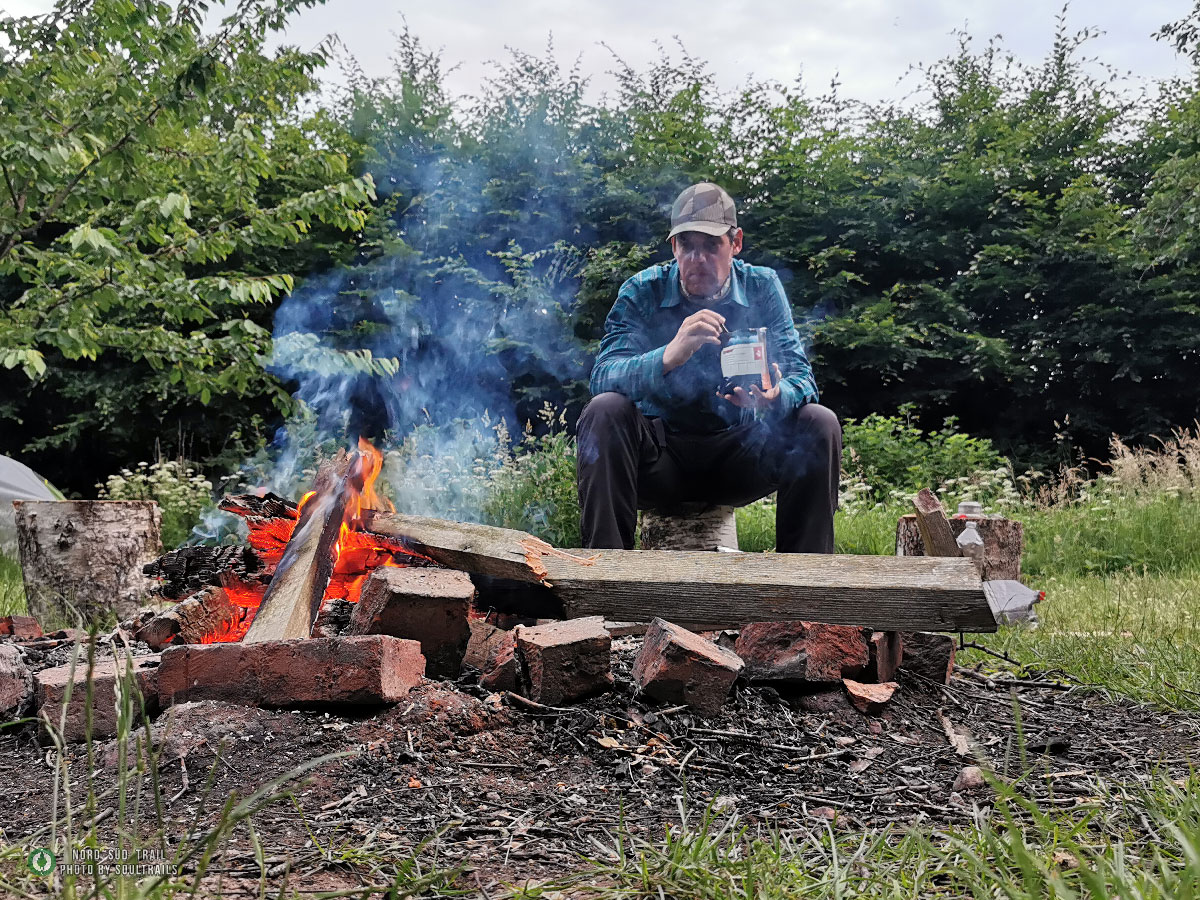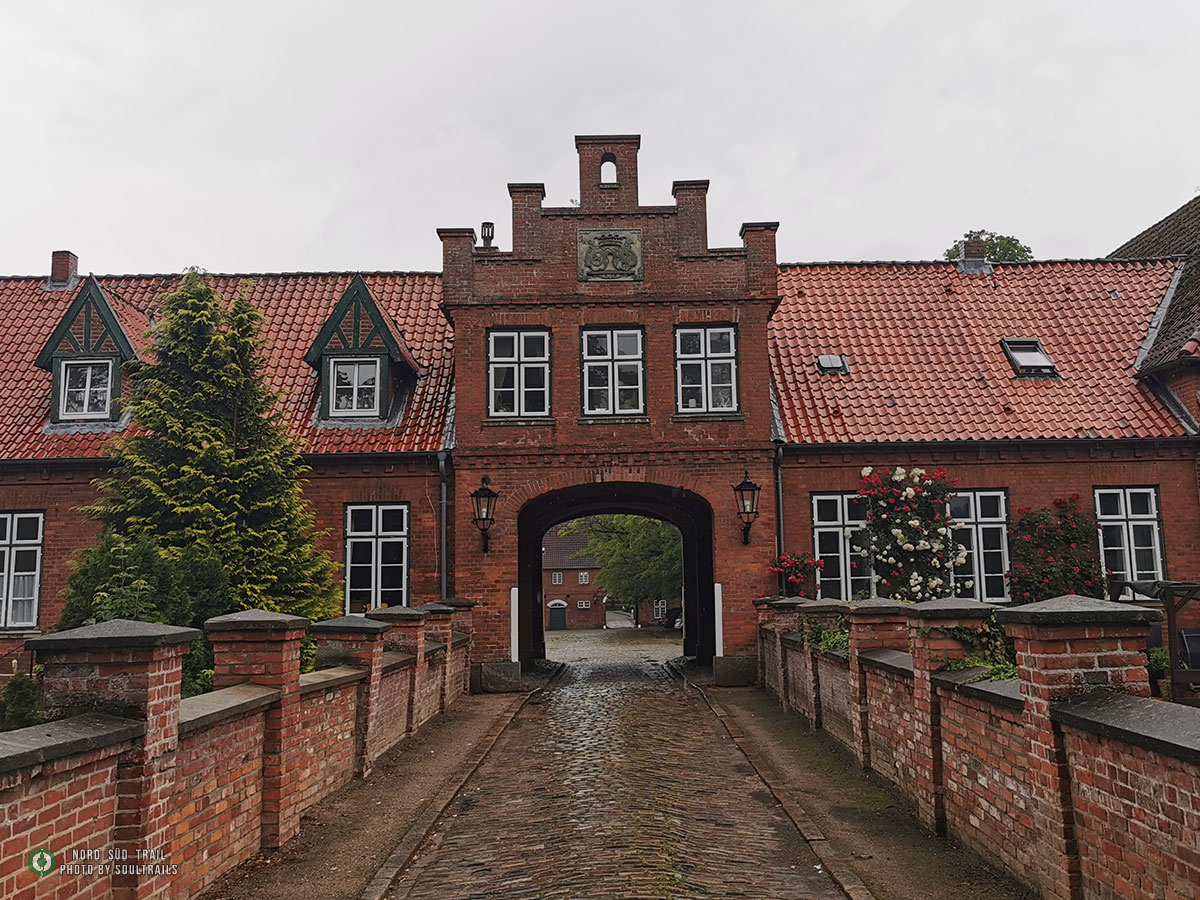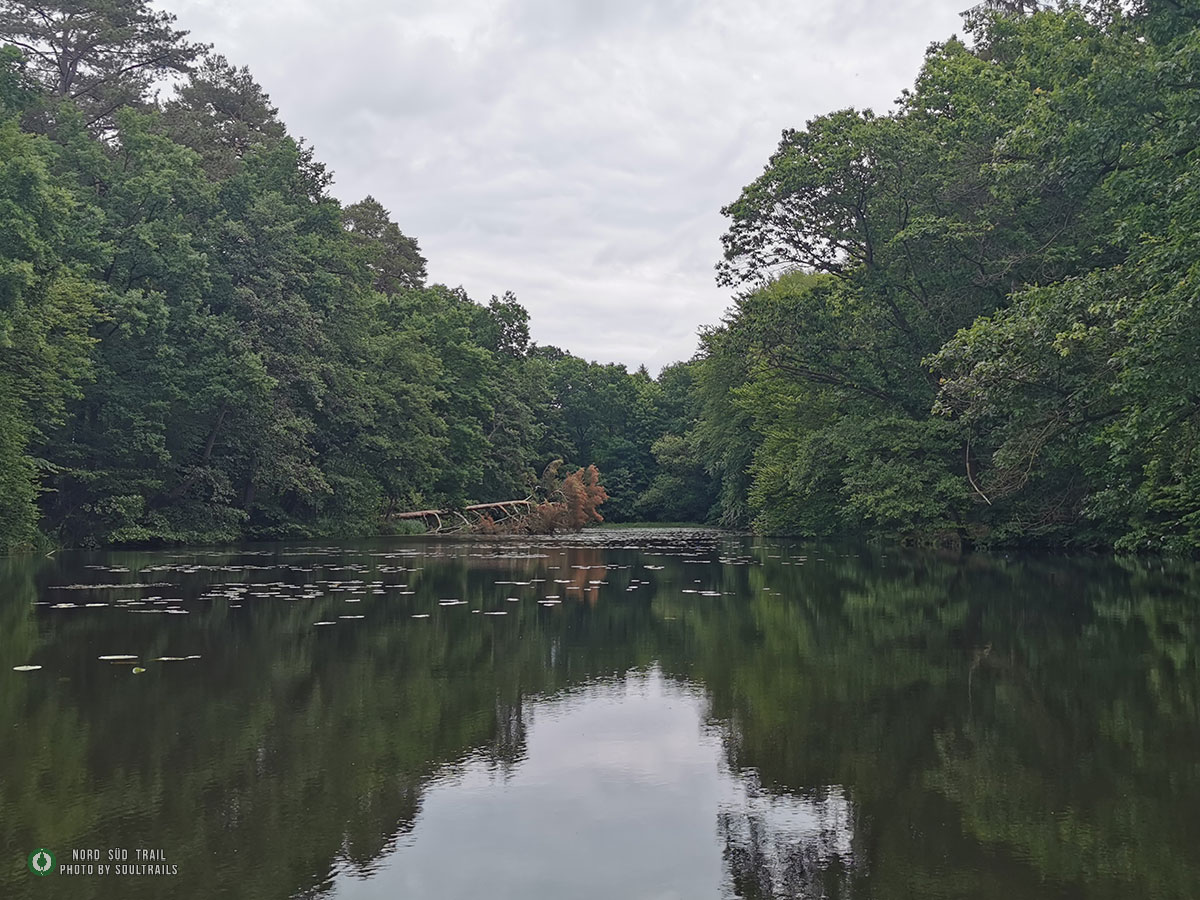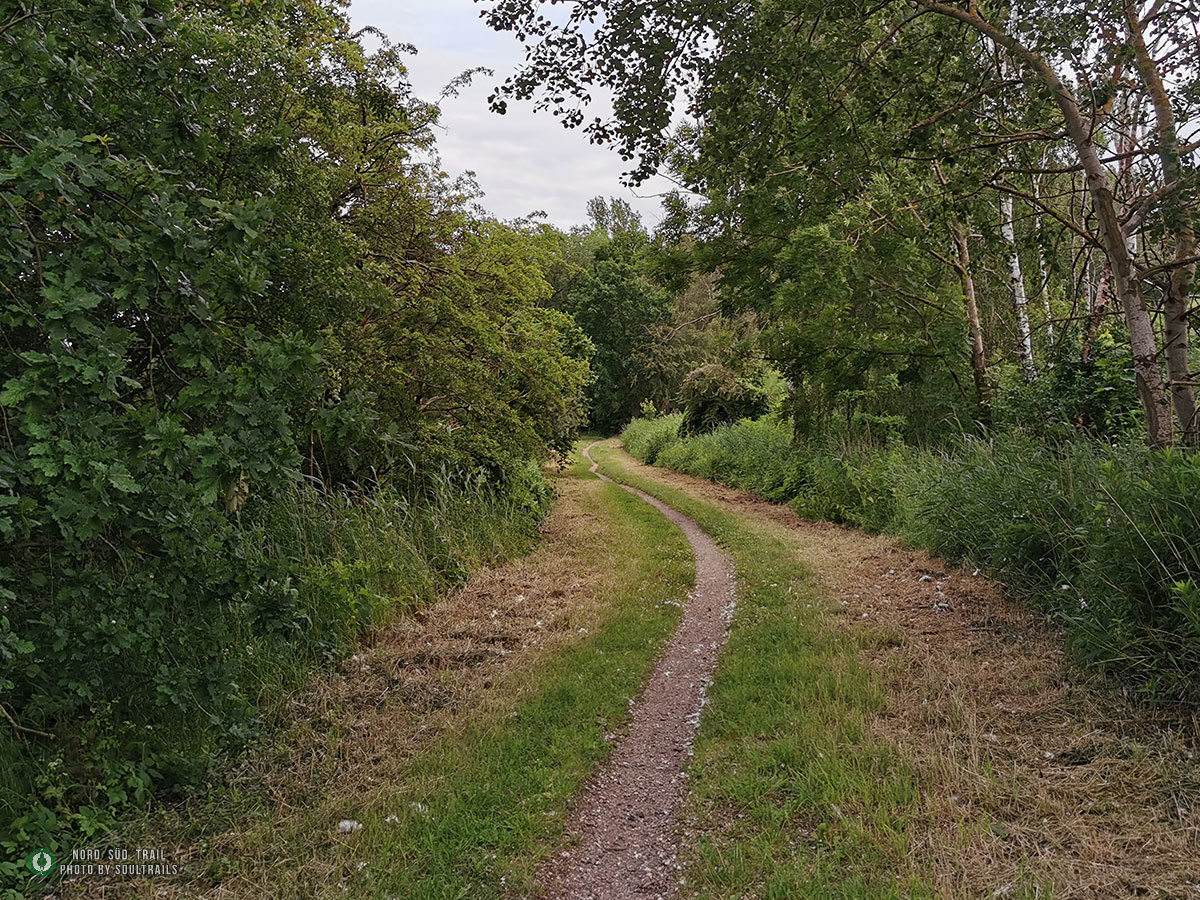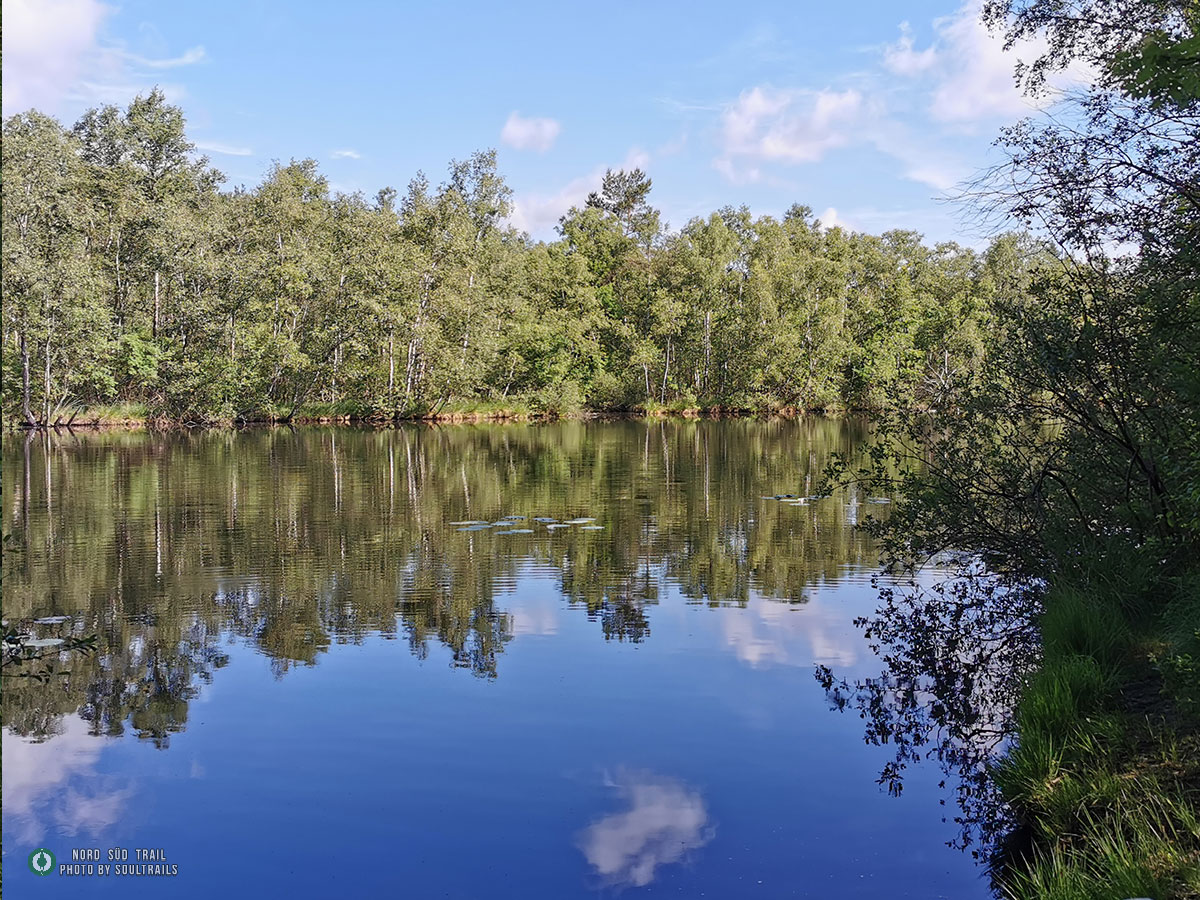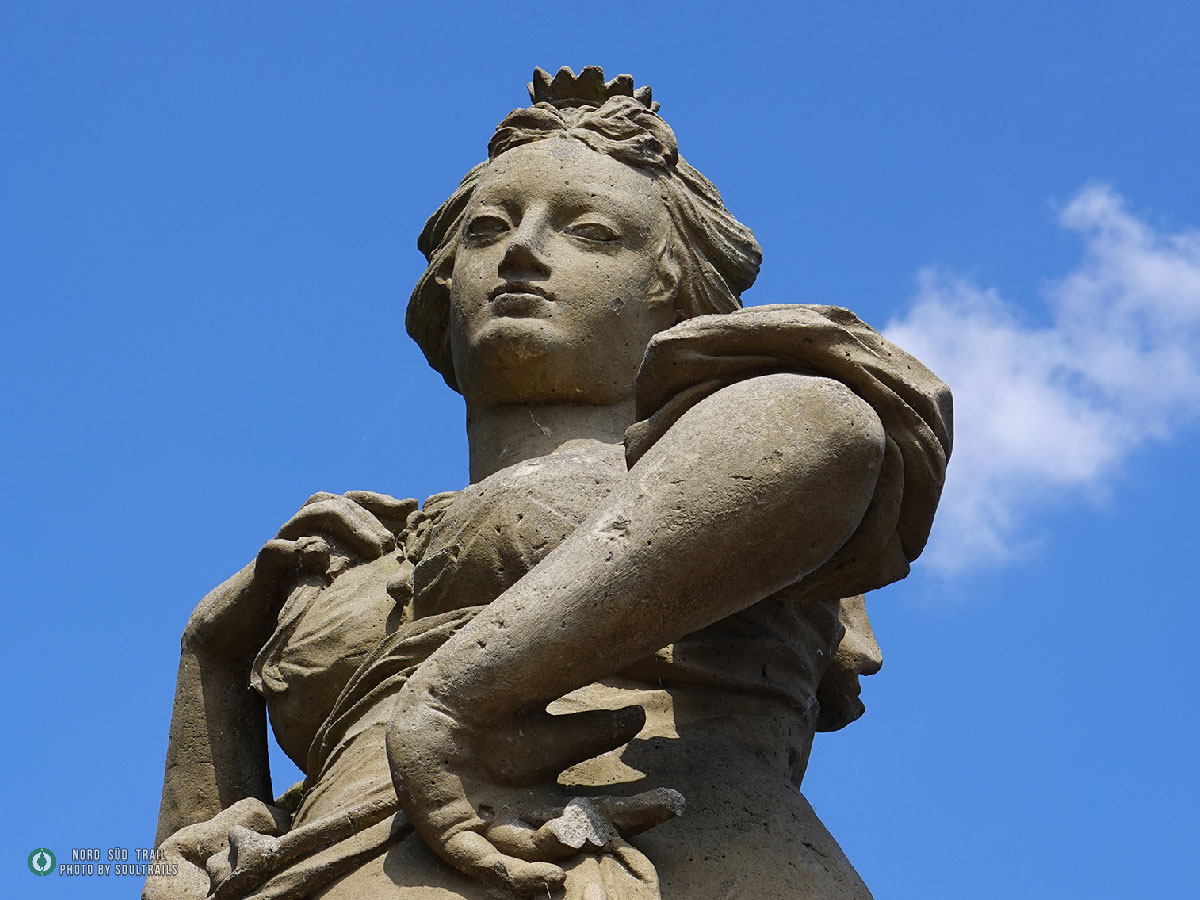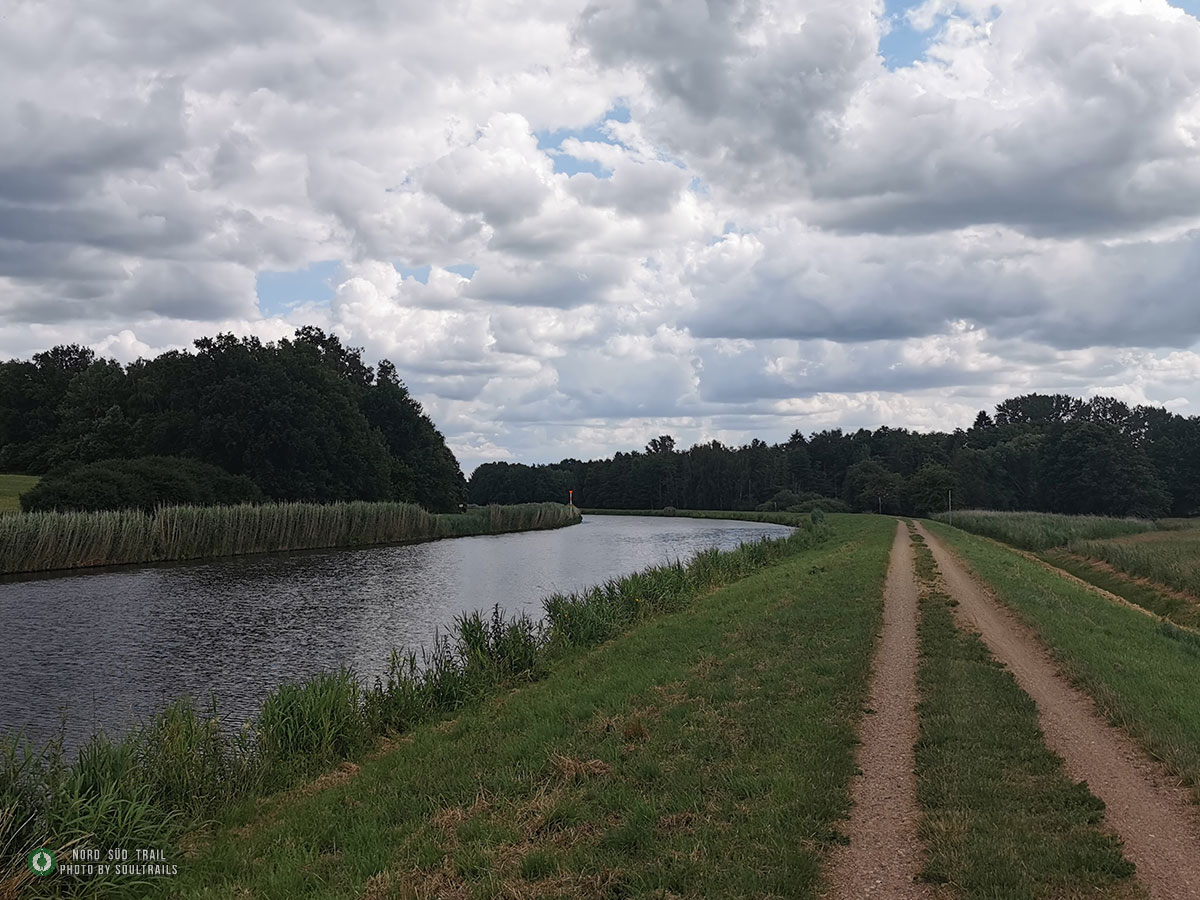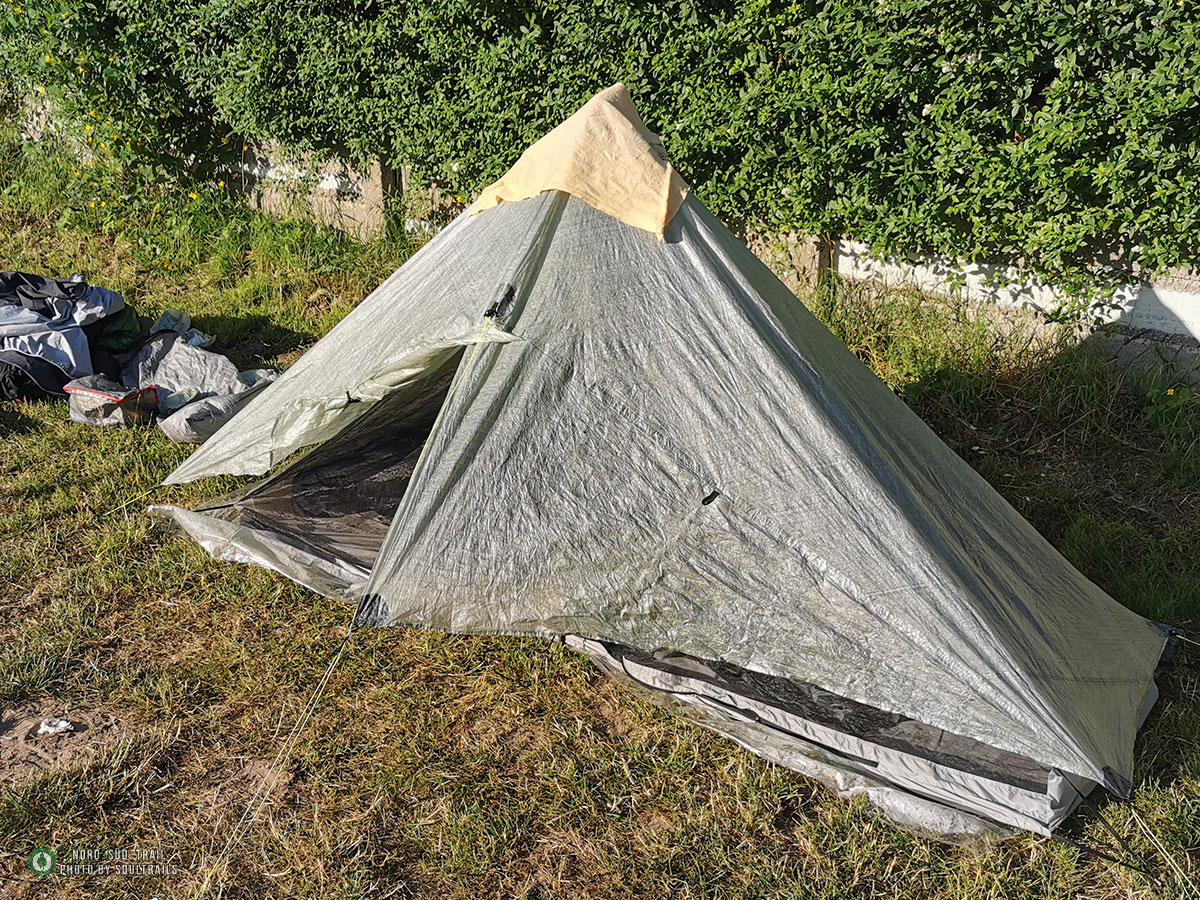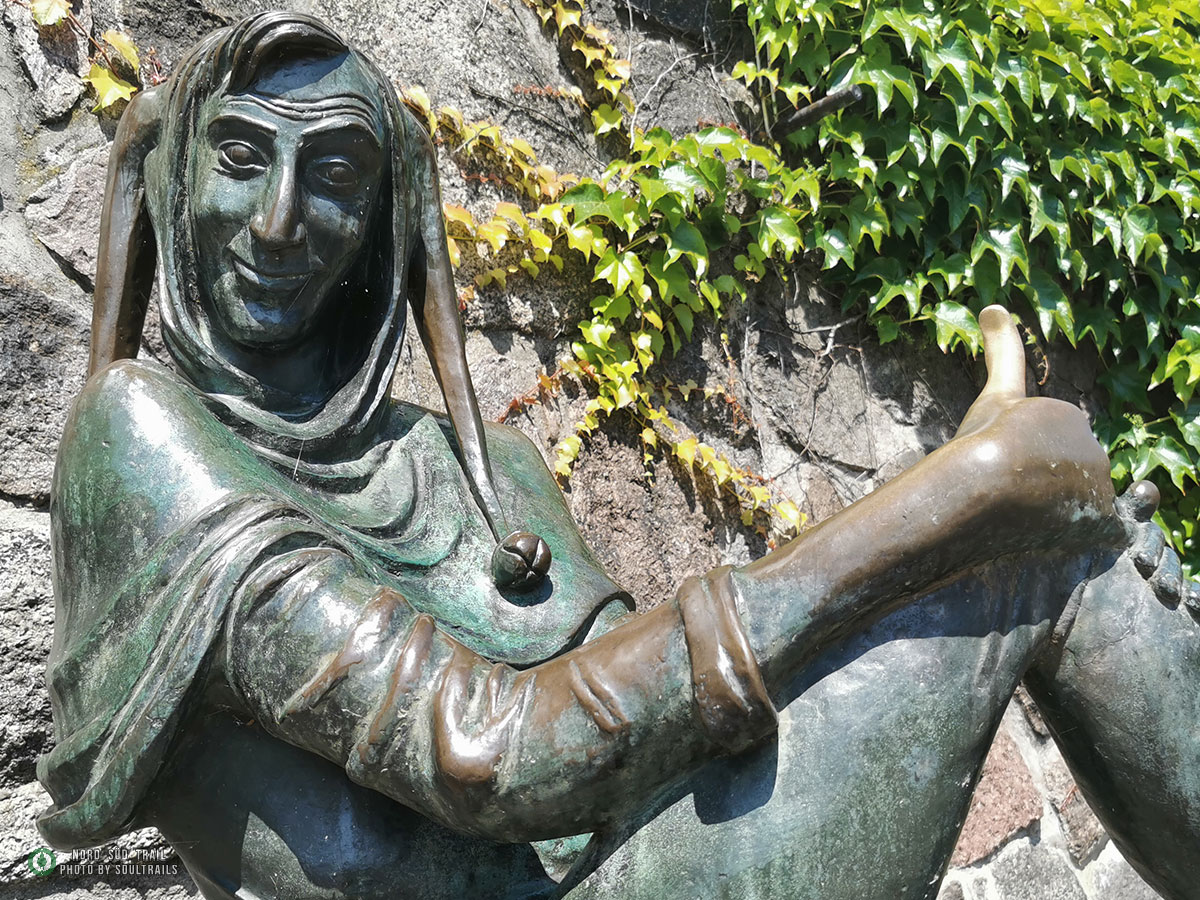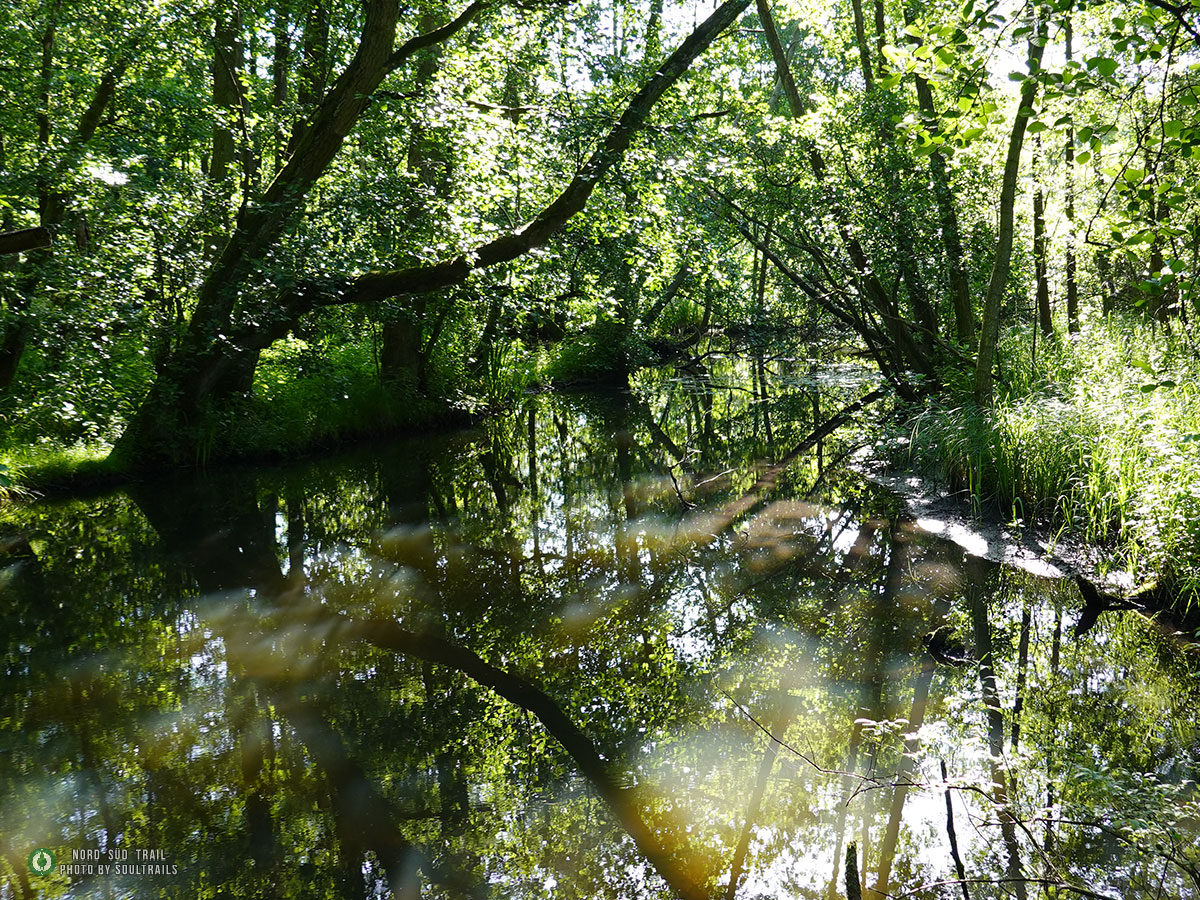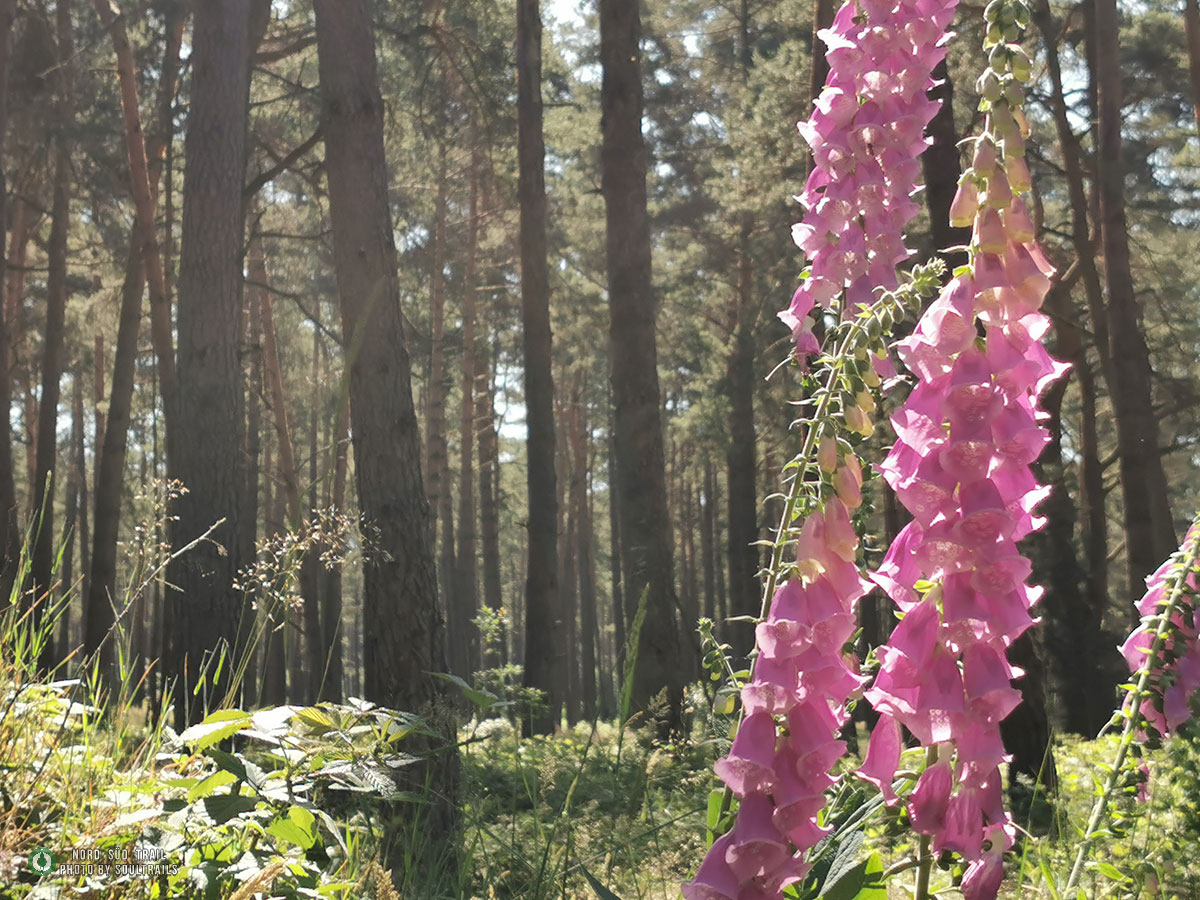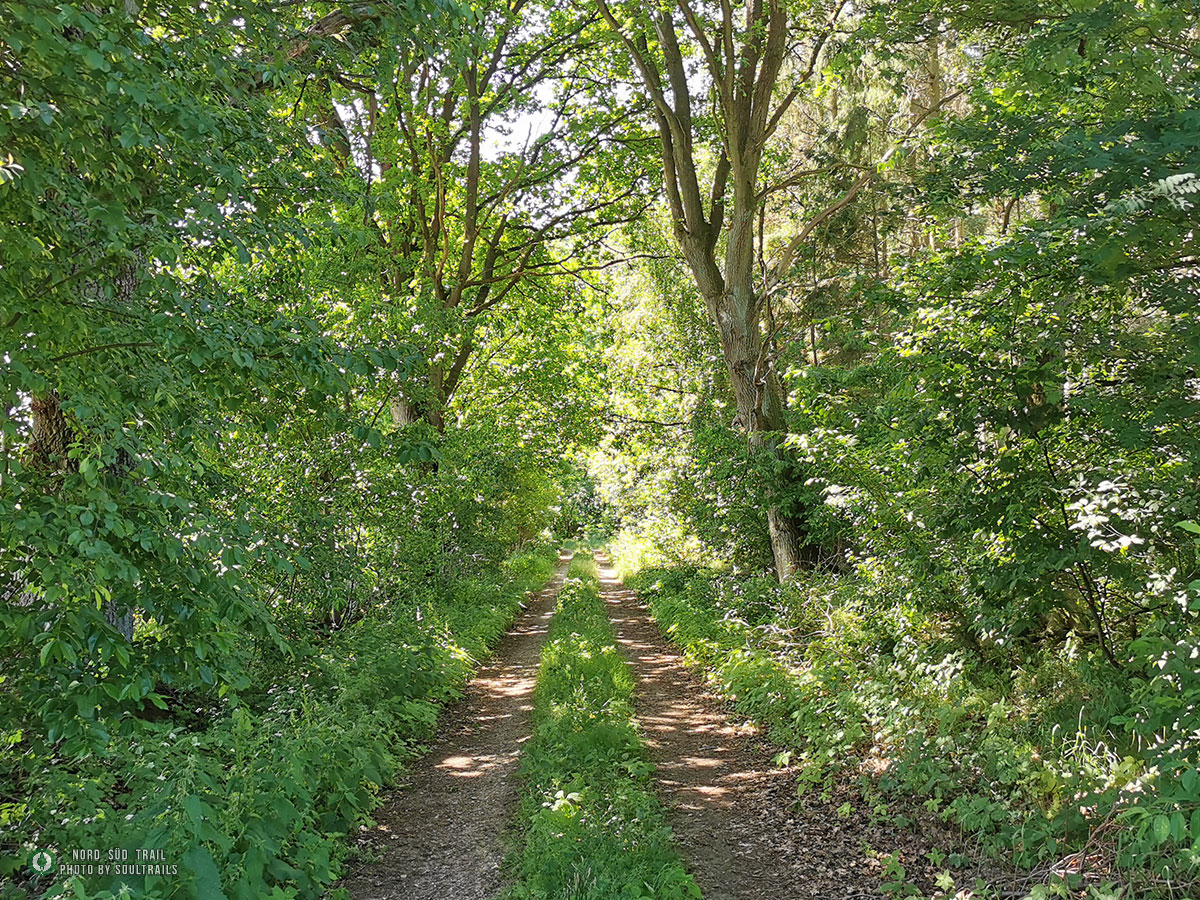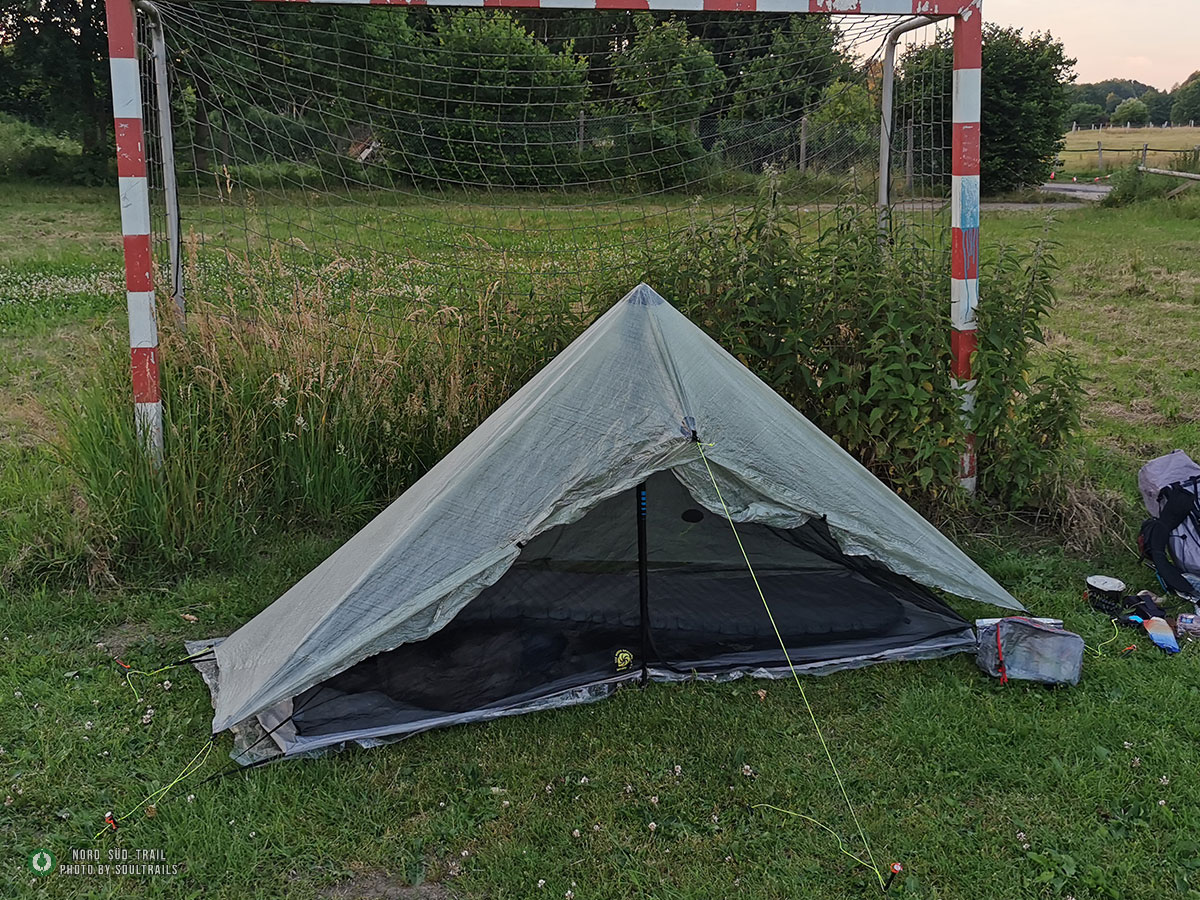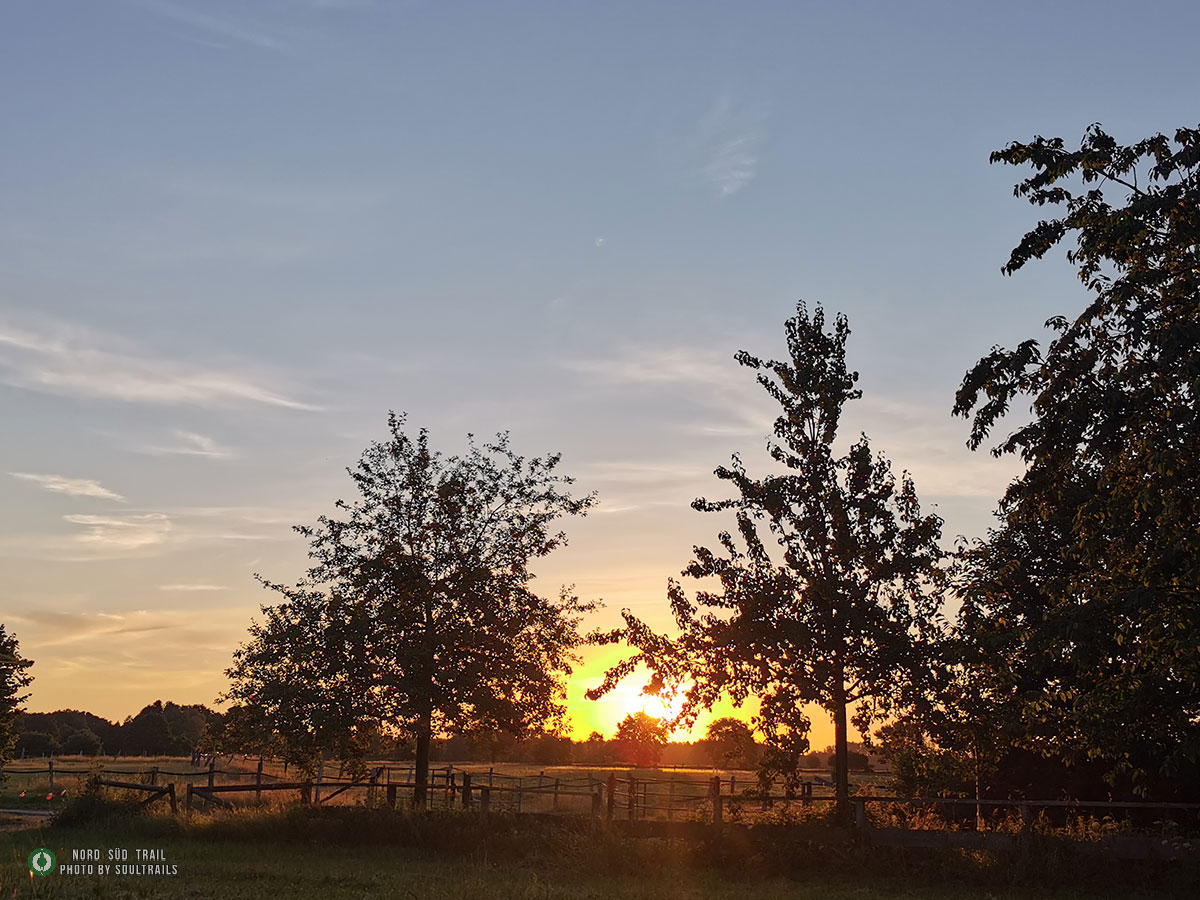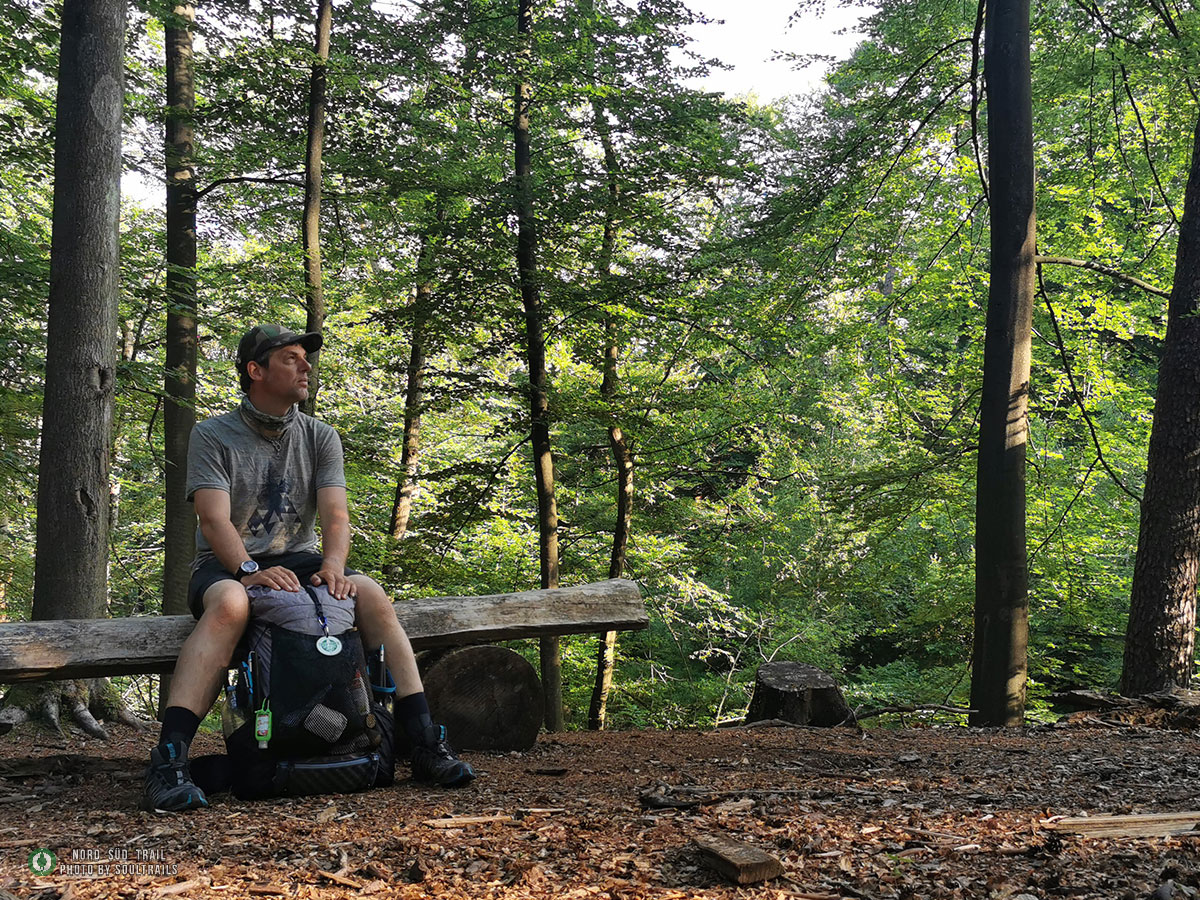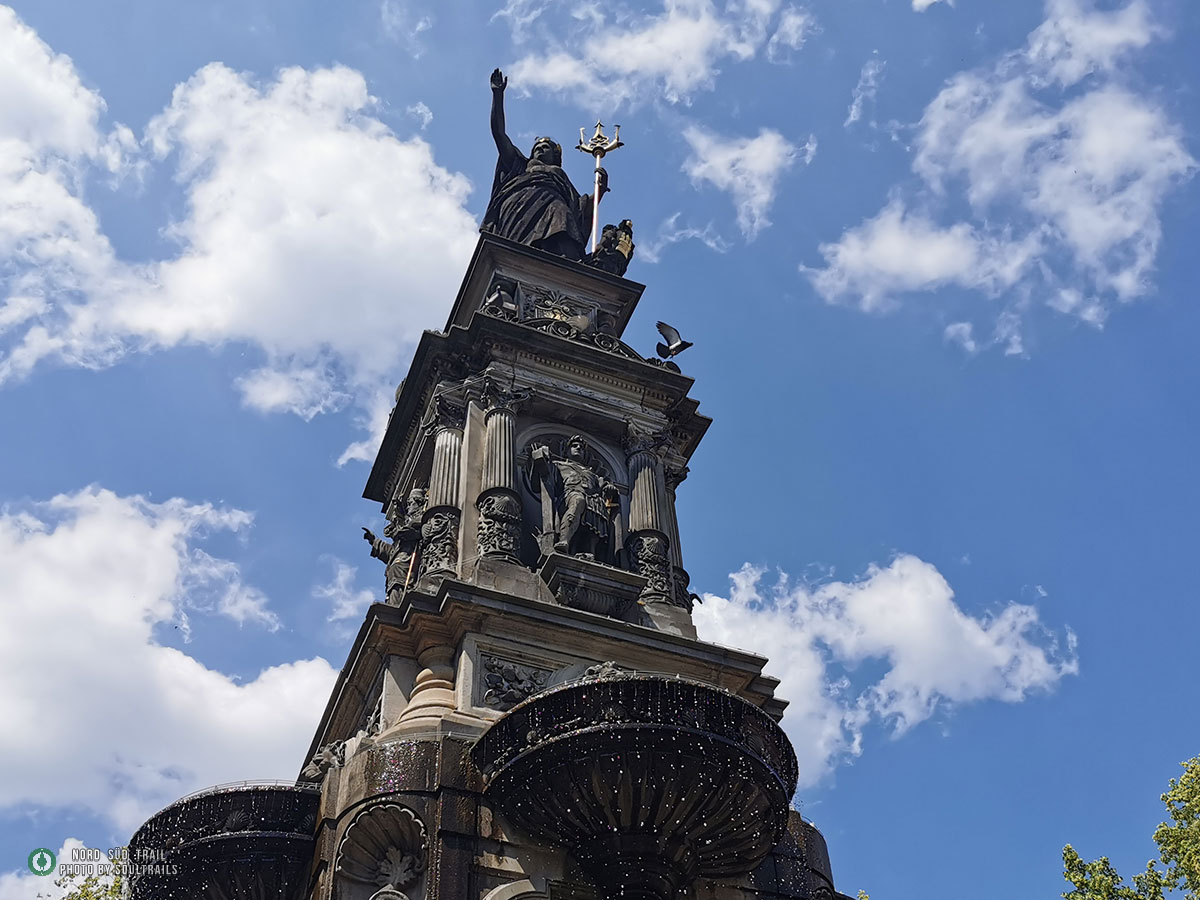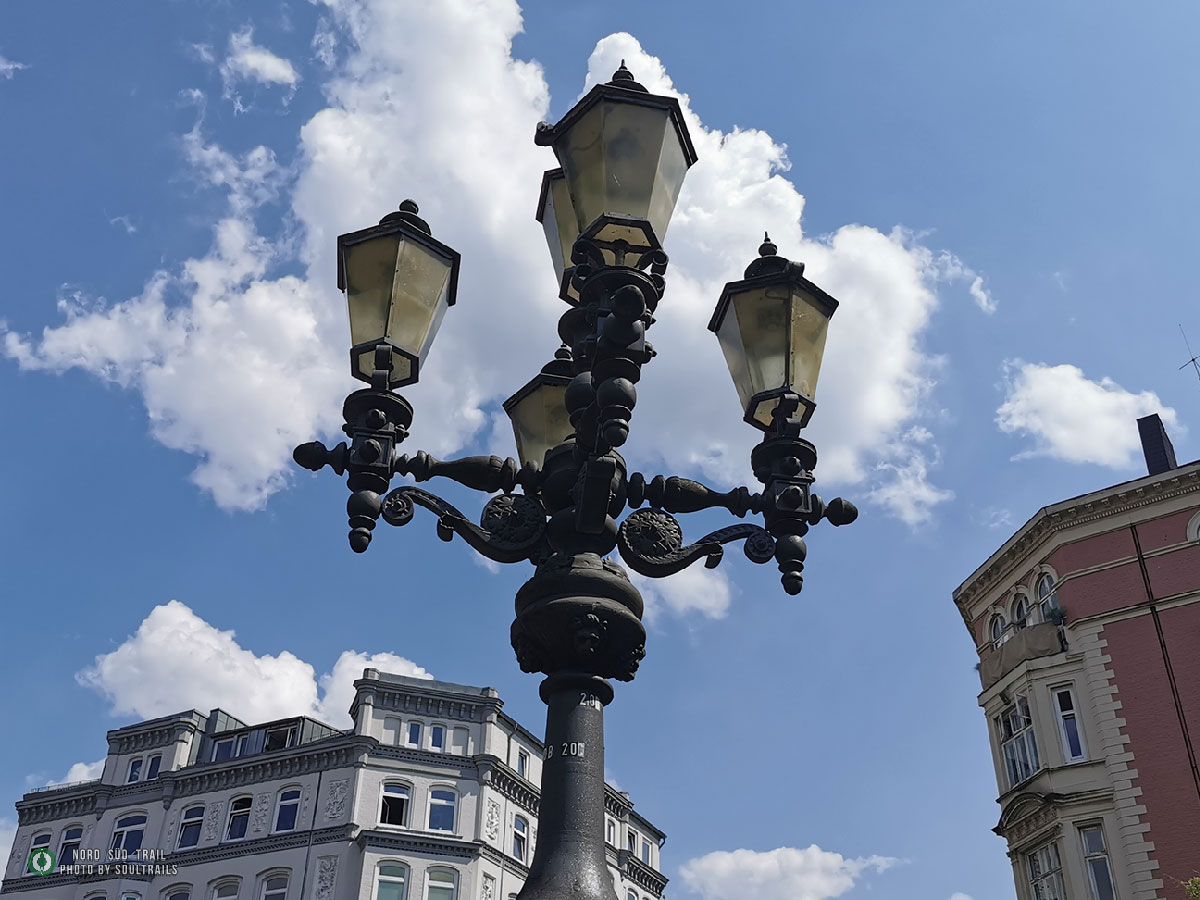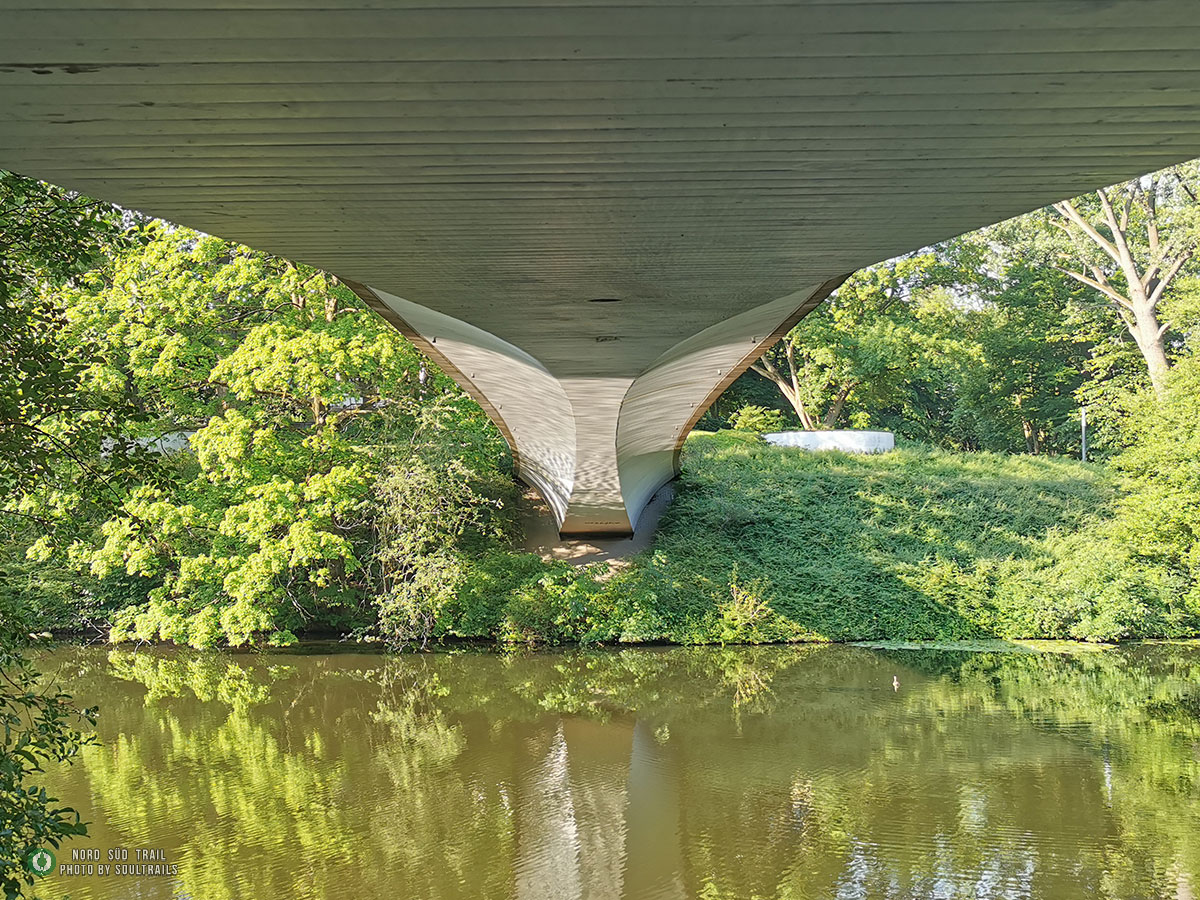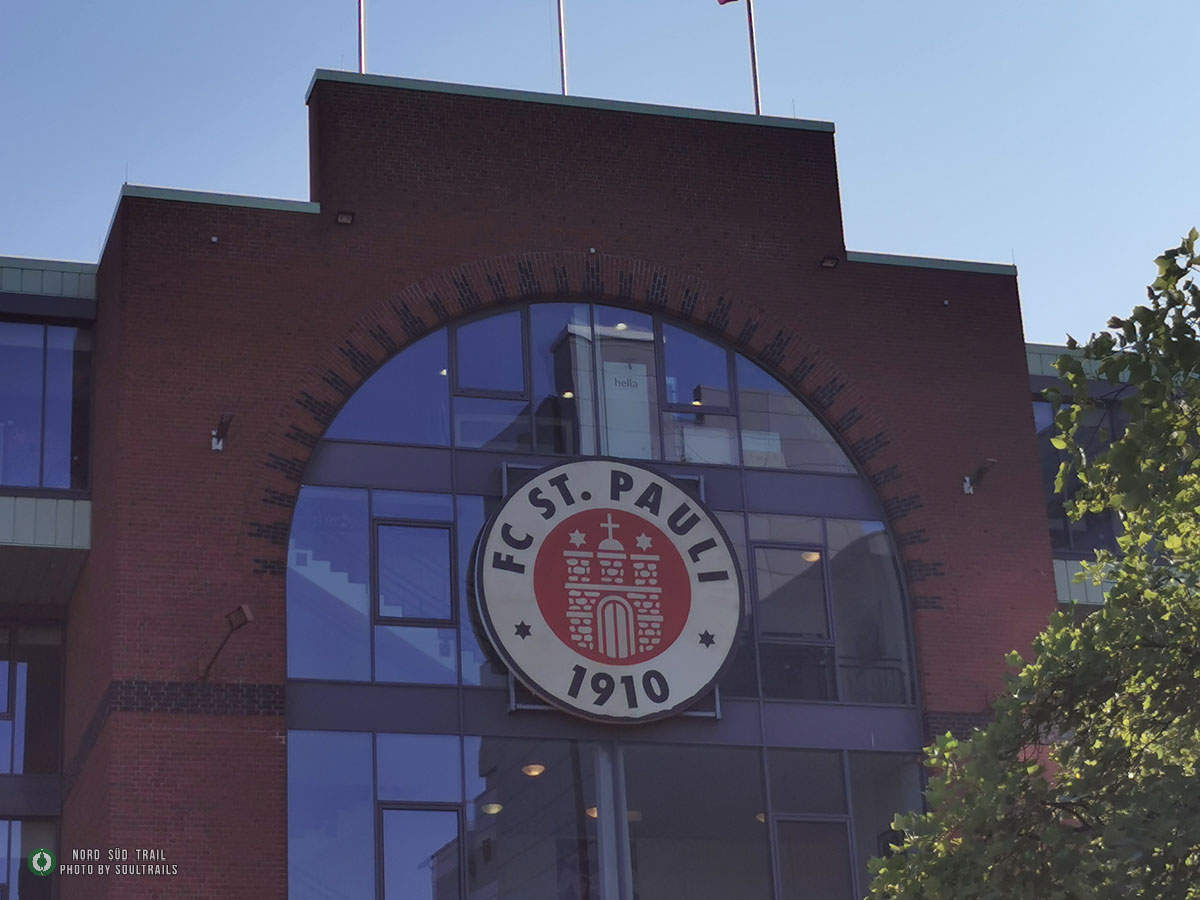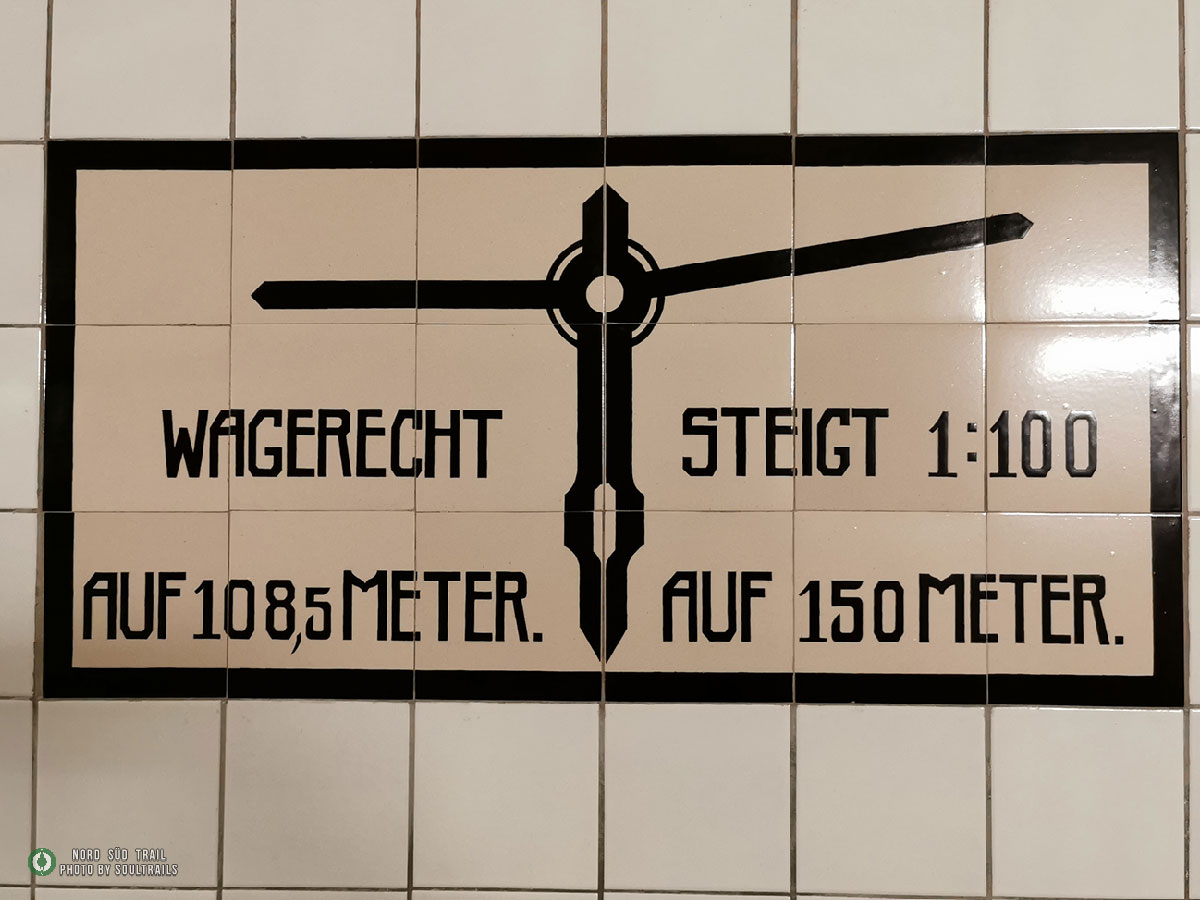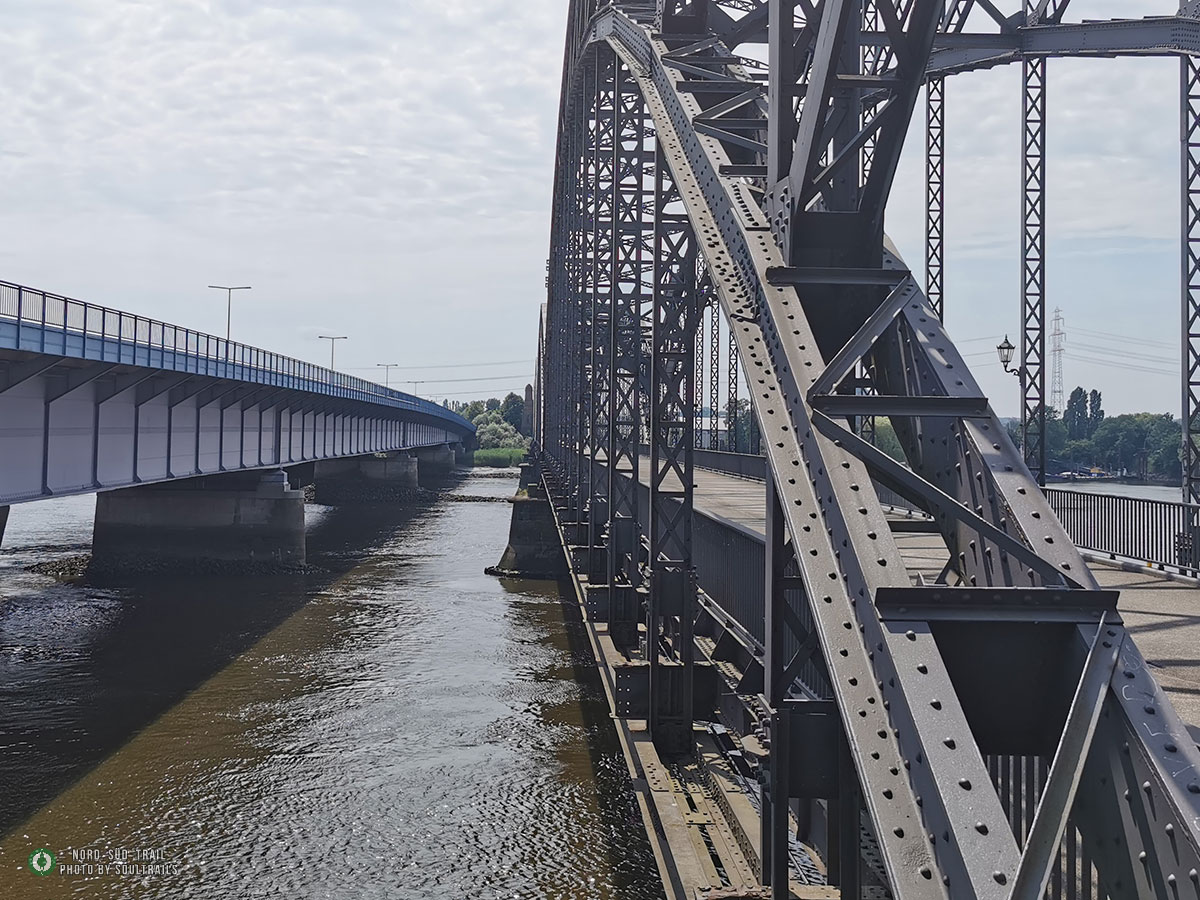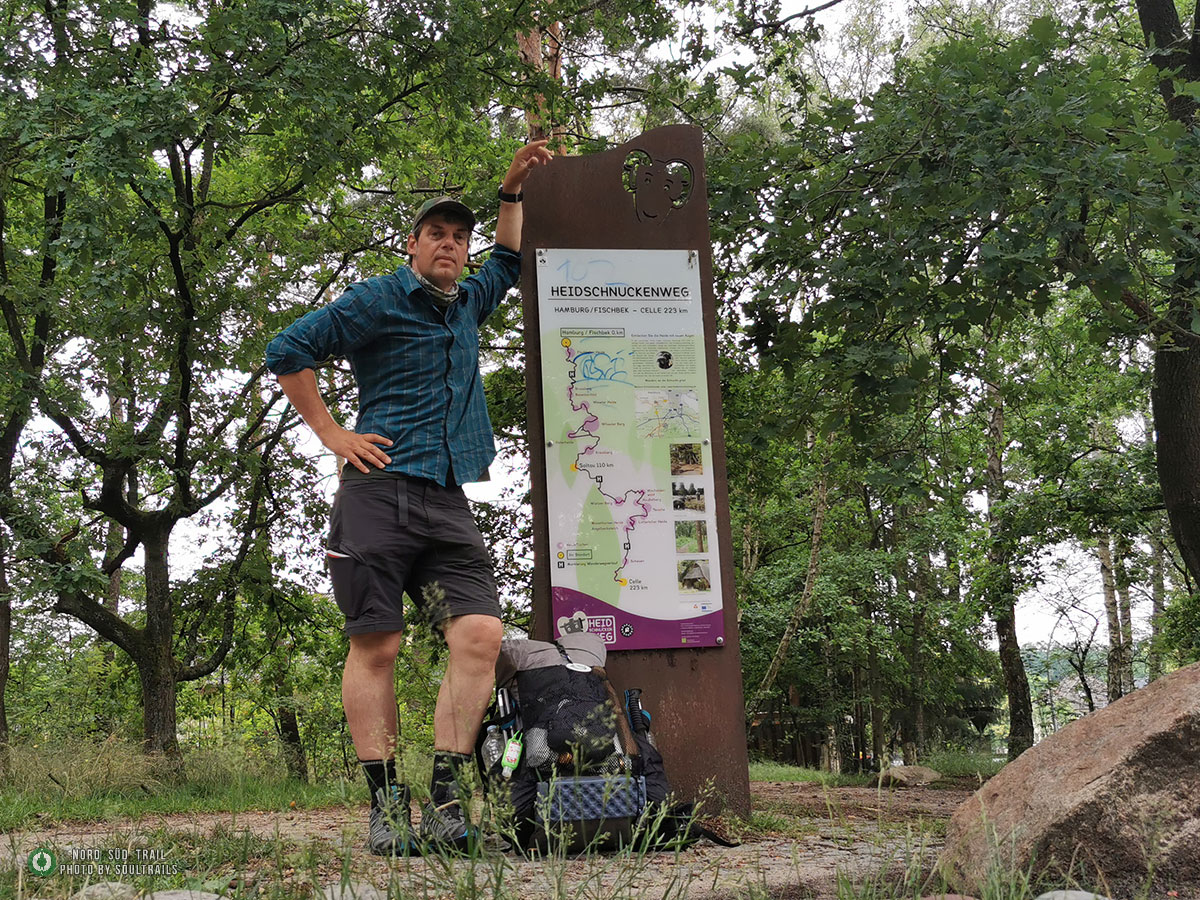The European Long Distance Trail 1
Flensburg - Hamburg (481km)
The European long-distance hiking trail E1 leads with a length of approximately 8,500 kilometers from the northernmost point of Europe to the coast of Sicily.

On the road on the E1

Flensburg. After Kiel and Lübeck, Flensburg is the third-largest city in the state of Schleswig-Holstein, the largest in the region of Schleswig, and the northernmost independent city in Germany, with over 90,000 inhabitants..
Here, the NST intersects with the E1, which stands for European Long Distance Trail 1. The European Long Distance Trails were initiated by the European Ramblers’ Association. One of the goals of their establishment in 1969 was to create a network of long-distance hiking trails that connect different countries in Europe. Over the years, twelve major long-distance hiking trails have been established based on this initiative (E1-12).
The total length of the E1 is approximately 60,000 km. However, a part of it is either not marked or only inadequately marked, or it is not yet physically present. Just like in the planning of the North-South Trail, the route of the E1 in Germany largely follows an existing long-distance hiking trail. The old North Sea – Lake Constance Trail corresponds largely to the current route of the E1 on German territory. The old trail markings were simply adopted: the white St. Andrew’s cross on a black background.
Among the lesser-known European long-distance hiking trails, the E1 is still the most popular, although a thru-hike is challenging due to its length of over 7,000 km. While there are some north-south connections among the E-trails, they are only sections of the entire routes and do not have dedicated trailheads. The unique aspect of the NST is that it truly starts at the northernmost point of Germany and ends at the southernmost point of Germany, at Border Stone 147 in the Allgäu Alps. This provides hikers on the NST with a tangible goal to achieve.
The European long-distance hiking trails are more suitable for hikers who plan to complete these lengthy routes over several years.…
The section of the NST begins in Flensburg at Bauerlandstraße/Alter Kupfermühlen Weg, where it intersects with the first trail marker of the E1. From there, you can confidently follow the E1 for 481 km until Hamburg. The initial kilometers lead through residential areas, followed by the Neustadt and the beautiful old town with its landmark, the Nordertor.The NST then continues along the harbor dam to the harbor’s tip. Further on, you’ll encounter residential areas and industrial zones.
As you reach Jarplund, the surroundings become quieter and greener. Passing by Arnkielpark, you’ll find an interesting attraction with a restored megalithic tomb and a shelter for overnight stays. The trail leads through peaceful paths, hilly meadows, fields, and forests, but unfortunately, it also includes sections of asphalt. After the Schäferhaus trekking site, the Süderholz campsite would be a good option, although it is slightly off the NST but very tranquil. Overall, the NST might not be a highlight until Schleswig, but it significantly improves from there onwards.

Ascent 499 Meter
Descent 524 Meter
FROM SCHLESWIG TO ECKERNFÖRDE
From Schleswig, the trail passes through the district of Friedrichsberg offering a beautiful view of the silhouette of the city of Schleswig. Continuing along the banks of the Schlei, you gradually leave the city center. It can be said that the trail becomes significantly more scenic and enjoyable from Schleswig onwards. The next destination is Haithabu, an ancient Viking settlement. Haithabu is also Haithabu is also the namesake for the present-day location of Haddeby, which derives from the Danish language. The NST follows the perimeter of the former Viking settlement and crosses the site where the large Sigtrygg stone, a runestone, was found. However, the stone you will see is a replica; the original is housed in the Haithabu Viking Museum.
A little highlight on the way is the narrow passage between Haddebyer Noor and Selker Noor, which you’ll cross via a wooden bridge. This area around the bridge is often knee-deep in water, so be prepared to take off your shoes and wade through it.
Along field and cycle paths, the route now heads towards Brekendorf, where you can replenish your water supplies at the local cemetery. From the village, the route now leads directly into the Brekendorf forest and thus to the Rammsee. The refuge at Rammsee is romantically situated and was recently rebuilt. The extra wide benches of the hut are perfect to spend a night there. On some winding single trails, you now head up the Aschberg, though “mountain” is a bit of an exaggeration at just under 98m (291 ft) high. You continue hiking on beautiful field and forest paths towards Osterby. Behind the village Kochendorf you can already see the Windebyer Noor. On a wide forest road around the Noor (lagoon) you now reach the 700 year old harbor town of Eckernförde.
In Eckernförde, there are plenty of opportunities to restock your supplies. From the Eckernförde pedestrian zone, the trail continues along the beach promenade, which can be quite busy on weekends. Unfortunately, the path now follows a heavily trafficked federal road until Mövernberg.
Now begins one of the most beautiful sections of the NST in Schleswig-Holstein, the Eckernförde Bay. You’ll walk along natural paths through a wooded area, enjoying magnificent views of the bay along the way.
ECKERNFÖRDE BUCHT (BAY)- A DREAM BY THE SEA
Shortly before Aschauhof the NST runs for 3km directly along the beach, but beware! Shortly before Noer, the NST climbs up from the coast into the forest. The signage is easy to miss. It continues through the beautiful forest area of Hegenwohld to the village of Noer. Just past the village, another gorgeous section awaits the hiker, right along the coast. I can only recommend an overnight stay at the Grönwohld campground. Cool campsite in surf style with its own supermarket. Shortly after the campsite it now goes up to the cliff, from here it’s time to enjoy…
In Dänisch Nienhof it goes once again through forest and fields, before you pass a large striking windmill to Stohl. From the village it goes further along the steep coast with picturesque views of the sea. Now it is not far to the lighthouse Bülk.
State capital Kiel
Here begins the Kieler Förde with a paved promenade path that extends to Kiel-Schilksee. The path is very nicely chosen here, you hardly notice that you are already near a big city. Behind the Holtenau industrial park, you reach the Kiel Canal. Here you have to take the pedestrian ferry (daily, free of charge) to cross the canal. After a short piece through urban area, it goes along the harbor promenade Kiellinie, here you have a good opportunity to catch a glimpse of a warship or the famous Gorch Fock, also a fish sandwich should be on the list here. Congratulations, Kiel is reached, here are many opportunities for shopping and accommodation.

Ascent 1230 Meter
Descent 1240 Meter
THAT'S WHY IT'S SO BEAUTIFUL IN THE NORTH.....!
At the Reventloubrücke in Kiel, you can take the Schwentinelinie F2 to Kiel-Wellingdorf. This line operates every half hour throughout the year, but unfortunately only on weekdays, and the fare is 1€.
From there, you’ll walk through the city center of Wellingdorf, following beautiful paths along the Schwentine River. The route continues on field and forest paths towards Flüggendorf. After some time, you’ll reach the Wildpark Schwentinental, where you can admire various wild animals. The trail continues with gentle hills, but the paths are very pleasant to walk on.
Following the course of the river Schwentine, you first reach the aristocratic monastery Preetz and a little later the city center of Preetz. Here you have again all possibilities for shopping.
South of Preetz, you’ll find a dreamy campsite right on the shores of Lanker See, perfect for taking a swim and resting.
As you continue, you’ll enter the enchanting Schleswig-Holstein lake and river landscape. Shortly after Plön, you’ll walk on beautiful paths through the forest along Dieksee. The trail leads directly to Bad Malente, a tourist highlight in the region with numerous hotels, restaurants, and shopping opportunities.
A bit below the town, you’ll find the stunning campsite “Camping An der Schwentine.” As the name suggests, the campsite is peacefully located right by the Schwentine River. There’s a petrol station nearby for smaller supplies.
Next we go along the picturesque Kellersee until we reach the village of Fissau. We continue to follow the course of the Schwentine, almost all lakes in the area are connected by this beautiful river. After the striking Bebensund Bridge, we reach the Great Eutin Lake and with it the town of Eutin. The NST now runs north along the Great Eutin Lake and later into a beautiful forest area. From the village of Stendorf, the path has unfortunately much to asphalt. Many kilometers you now run on roads, but the way is worth it.
THE HIGHEST MOUNTAIN IN SCHLESWIG-HOLSTEIN
The Nord Süd Trail reaches Bungsberg, the highest mountain in Schleswig-Holstein. It’s highly recommended to take this extra detour as it offers a fantastic view from the observation platform of the TV tower located there. The platform is freely accessible and, on clear days, allows you to see all the way to the Baltic Sea. Moreover, right on Bungsberg, there is another legal trekking spot provided by “Wildes SH.”.
Before reaching the town of Schönwalde am Bungsberg, you’ll pass through the marshlands of Beckmissen.

Ascent 1168 Meter
Descent 1067 Meter
THE HANSEATIC CITY OF LÜBECK
Just beyond Kasseedorf, there is a private trekking spot of the “Wildes SH” project. It’s a lovely area with a fire pit and ample space. Hilly landscapes and beautiful trails accompany you around the Kasseedorfer Teiche until you reach the impressive private grounds of Guts Sierhagen. In the harbor city of Neustadt in Holstein, you can take the time for shopping or enjoy a hearty meal..
Unfortunately, from this point onward, there is a lot of asphalt on the trail. While there are still great views of the Lübecker Bucht (Bay of Lübeck) or the city of Lübeck from the Pariner Berg, you’ll be walking on a heavily traveled county road without a footpath. Now you are gradually approaching the city of Lübeck.
It’s a good idea to take a zero-day here and explore the city of Lübeck before reaching it. Before arriving in Lübeck, you’ll pass through Ratekau and continue through the beautiful Sielbektal. At Herrentunnen, where the NST passes under the Trave River, you’ll need to take the shuttle bus as there is no other option. Fortunately, the bus is free of charge.
After the short bus ride, you’ll continue along the Trave River until you reach Palinger Heide. Here, you briefly leave the E1 and cross the state border into Mecklenburg-Vorpommern. You’ll then continue leisurely on the Kolonnenweg, the former Inner German Border, before meeting the familiar sign of the E1 again on the outskirts of Lübeck-Eichholz.

Ascent 817 Meter
Descent 909 Meter
The NST now leads us slowly out of the urban city area. From Lübeck-Eichholz, the trail takes us in close proximity to Lübeck Airport and then to the beautiful Blankensee. After a unfortunately too short stretch through the forest, there is a longer section on asphalt until you finally reach the Krummesee, where the Elbe-Lübeck Canal begins.
Now comes a little highlight. It’s really enjoyable to walk along the canal and observe the passing ships.
MÖLLN - THE EULENSPIEGEL CITY
On the right side of the trail, there is also a legal natural camping spot for overnight stays. However, I recommend choosing the Naturcamping Buchholz, right on the shores of Lake Ratzeburg. There, you’ll find a vending machine with chilled drinks and snacks (beer, water, etc.).
Continuing along the shores of Lake Ratzeburg, we follow the trail to the town of Ratzeburg, where there are plenty of shopping opportunities.
After leaving the historic town center on the Altstadtinsel (Old Town Island) via the dam, we continue towards Küchensee. We now traverse beautiful hilly forest sections until we reach the Altstadt (Old Town) of Mölln. Here, you’ll also find the famous Eulenspiegel-Brunnen (Eulenspiegel Fountain). And of course, Mölln offers plenty of shopping options as well.
The NST now follows a very picturesque route along Schmalsee, Lütauer See, and Drüsensee. The camping site at Lütauer See comes highly recommended.
Continuing past Drüsensee, you’ll encounter another highlight of the northern section, the Hellbachtal Nature Reserve.
On picturesque small single trails, you’ll hike along Krebssee, Lottsee, and Schwarzsee. Shortly after crossing the A24 motorway near Güster, the NST reaches the 500 km mark – a reason to celebrate! Congratulations, the first 500 km of your long journey have now been accomplished.

Ascent 375 Meter
Descent 398 Meter
THROUGH THE SAXONY FOREST TO HAMBURG
After enjoying the beautiful and charming lakes and river landscapes of Ratzeburg and Mölln, it’s time to head towards the Hanseatic city of Hamburg. Behind Güster, you’ll primarily hike through hilly agricultural landscapes, which are still very beautiful and diverse. Unfortunately, there are no camping sites on this section. However, a good spot for wild camping can be found near Kuddewörde.
Beyond Kuddewörde, we briefly walk along a road before entering the Sachsenwald. Here, the Billetal begins, guiding us along the Bille river on lovely single trails. The path is so delightful that only the underpass of the A24 motorway serves as a reminder that we are nearing a major city.
At Aumühle, the NST leaves the Sachsenwald and continues through urban green areas and smaller city forests towards Hamburg-Bergedorf. Just before that, we cross the state border. Congratulations, we have completed the second federal state. Hamburg awaits us.
Here’s a tip:
Hiking through a city as large as Hamburg with a big trekking backpack might not be enjoyable. It’s a good idea to take the city train (Stadtbahn) at Bergedorf and find accommodation in the city center of Hamburg. For the next two days, you can travel back to Bergedorf with a light daypack and leisurely explore the city, visiting some of its sights along the way.
In the St. Pauli district, there’s something for football fans – the new Millerntor Stadium of FC St. Pauli, located right in the Kiez. Although the new stadium lacks the chaotic charm of the old cult site at the Millerntor, the architects made an effort to integrate it into the neighborhood, which they achieved with the retro-influenced red brick elements.
The old NST route used to pass through the beautiful Elbe Tunnel from the Landungsbrücken. However, that route was marked by container and loading landscapes, making it very urban and asphalt-heavy. This route is no longer listed since 2022.
Instead, we now continue following the E1 along the Elbe downstream. We pass by the Hafenstraße and the Fischmarkt until we reach the Altona district. We keep walking parallel to the upscale and expensive Elbchaussee. A small tip is the Elbstrand camping site, a few meters westward. It’s undoubtedly one of the most beautiful camping spots along the entire NST. In the Blankenese district, a ferry takes us to the other side of the Elbe, to Cranz. Now, we have only a few more kilometers to reach the Trailhead of the Heidschnucken Weg and the 600-kilometer mark.






